Fresh curb appeal often begins at knee level, where texture, color, and proportion meet. That zone is the natural stage for exterior wainscoting, a centuries-old trim concept now brimming with modern twists. From rugged stone skirting to sleek fiber-cement boards, the right lower cladding shields and dazzles. It guards walls from splash damage, anchors the façade visually, and hints at your style before guests knock. Having helped homeowners specify trims for coastal cottages and snow-belt chalets, I’ve seen how small tweaks transform exteriors. Ready to picture your own update? Let these inventive wainscoting ideas spark materials, colors, and confident DIY moves.
1. Classic Board-and-Batten Wainscoting for Timeless Curb Appeal
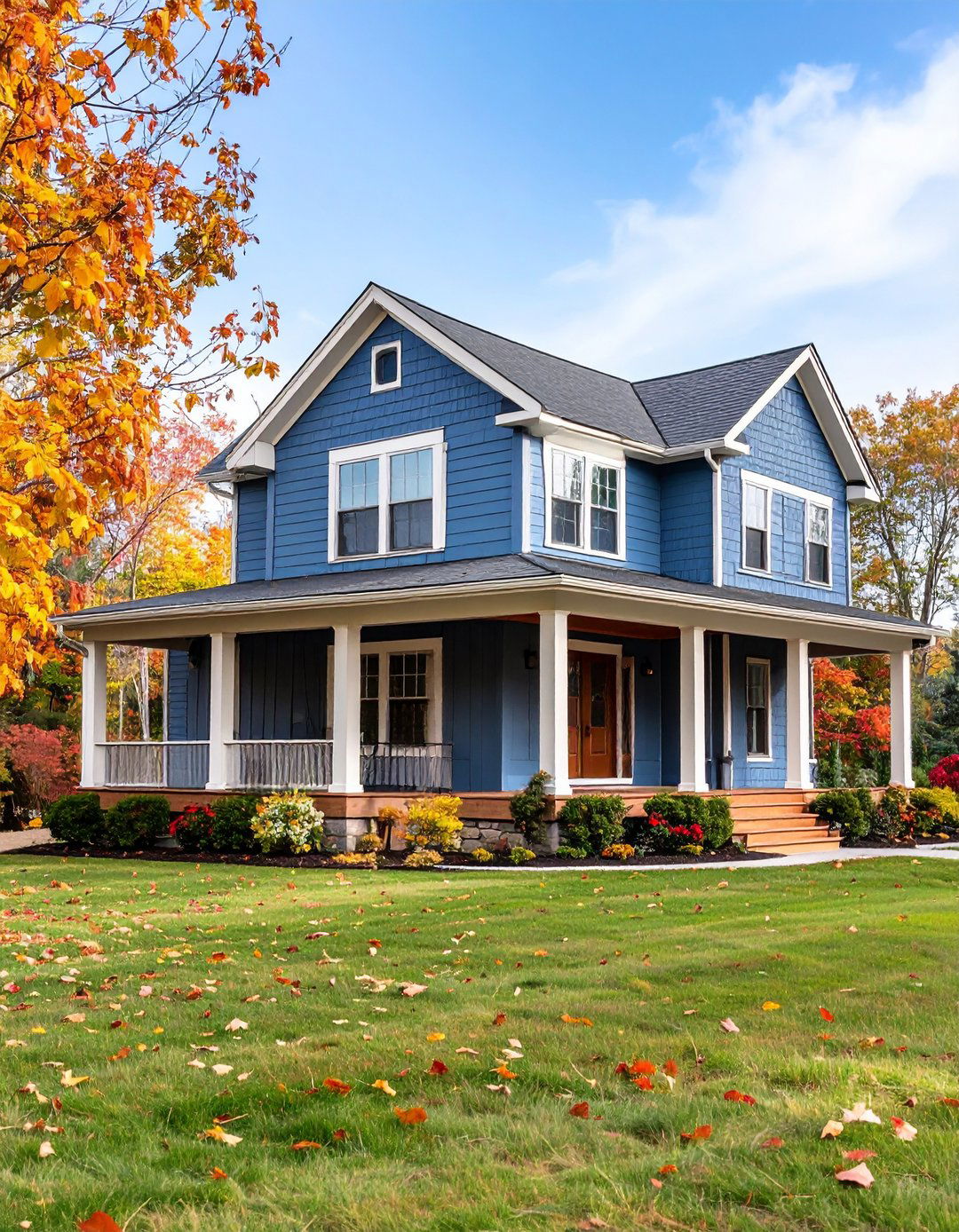
A timeless favorite, classic board-and-batten exterior wainscoting instantly recalls farmhouse barns and seaside cottages. Wide vertical planks create confident rhythm, while slimmer battens hide joints and cast elegant shadow lines. Choose cedar or fiber-cement boards; both resist moisture splashback and give crisp definition along the foundation. Painting the wainscoting one or two shades darker than the upper siding grounds the entire façade visually. Cap the detail with a simple drip-edge moulding to shed water and protect the plank tops. When installed over rain-screen furring, board-and-batten wainscoting also encourages air circulation, prolonging material life. The result is a classic base that suits Craftsman bungalows, contemporary farmhouses, and mountain cabins alike.
2. Coastal-Style Shiplap Wainscoting That Defies Humidity
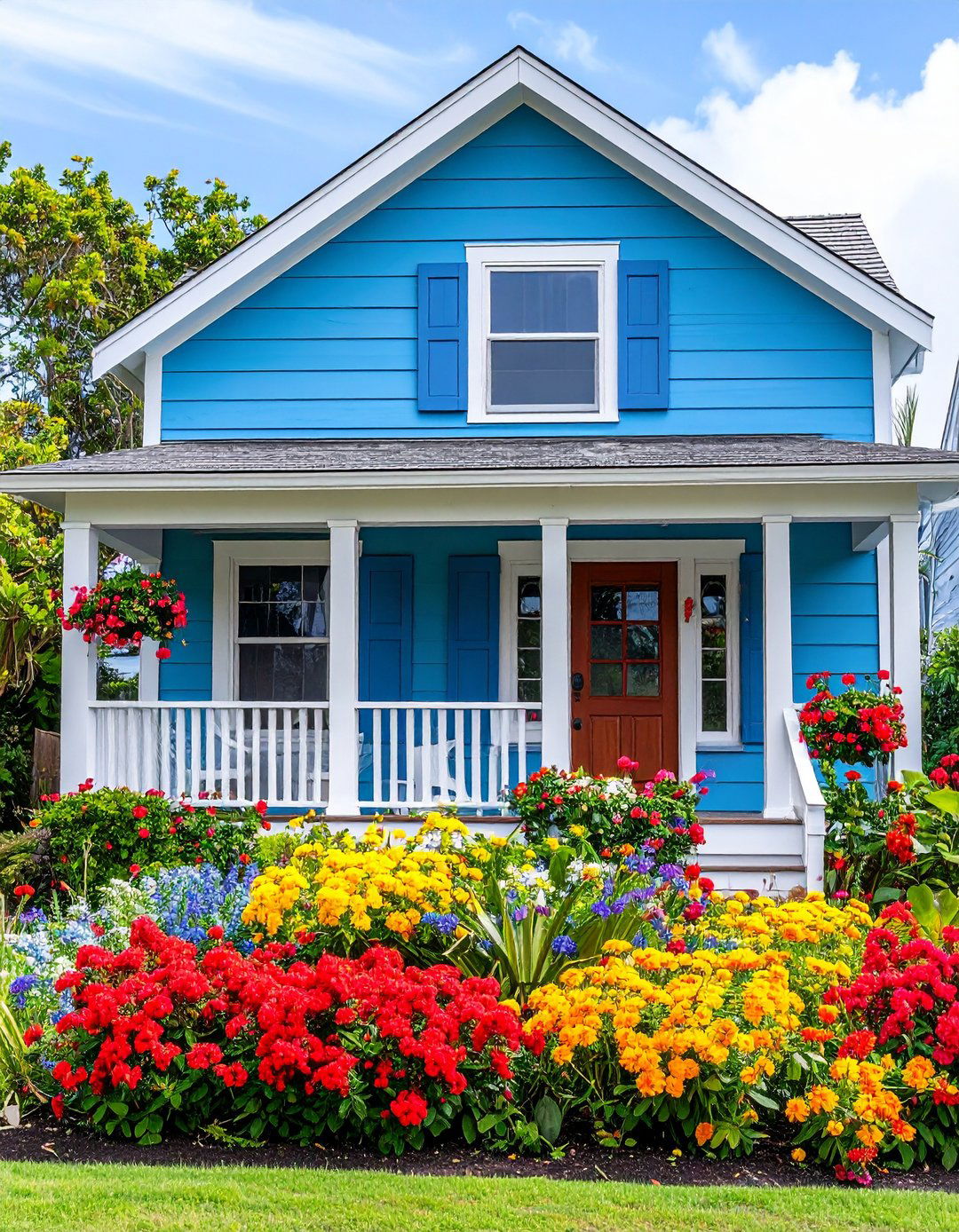
For breezy oceanside homes, horizontal shiplap exterior wainscoting channels beach-house ease while shrugging off salt spray. Tongue-and-groove edges lock boards tight, creating a flat plane that rainwater can’t easily infiltrate. Use rot-resistant cypress or marine-grade PVC to prevent swelling, cupping, and termite dining in damp climates. A soft pastel or whitewashed finish accentuates the horizontal lines and pairs naturally with weathered decking. Run trim boards where the wainscoting meets siding, then seal seams with high-quality silicone formulated for coastal exposure. Shiplap’s continuous surface allows quick rinsing after storms, a maintenance bonus when every minute outside counts. Together these traits craft a soothing, durable skirt that complements cedar shingles, metal roofs, and wrap-around porches.
3. Stone Veneer Wainscoting for Rugged Texture and Durability
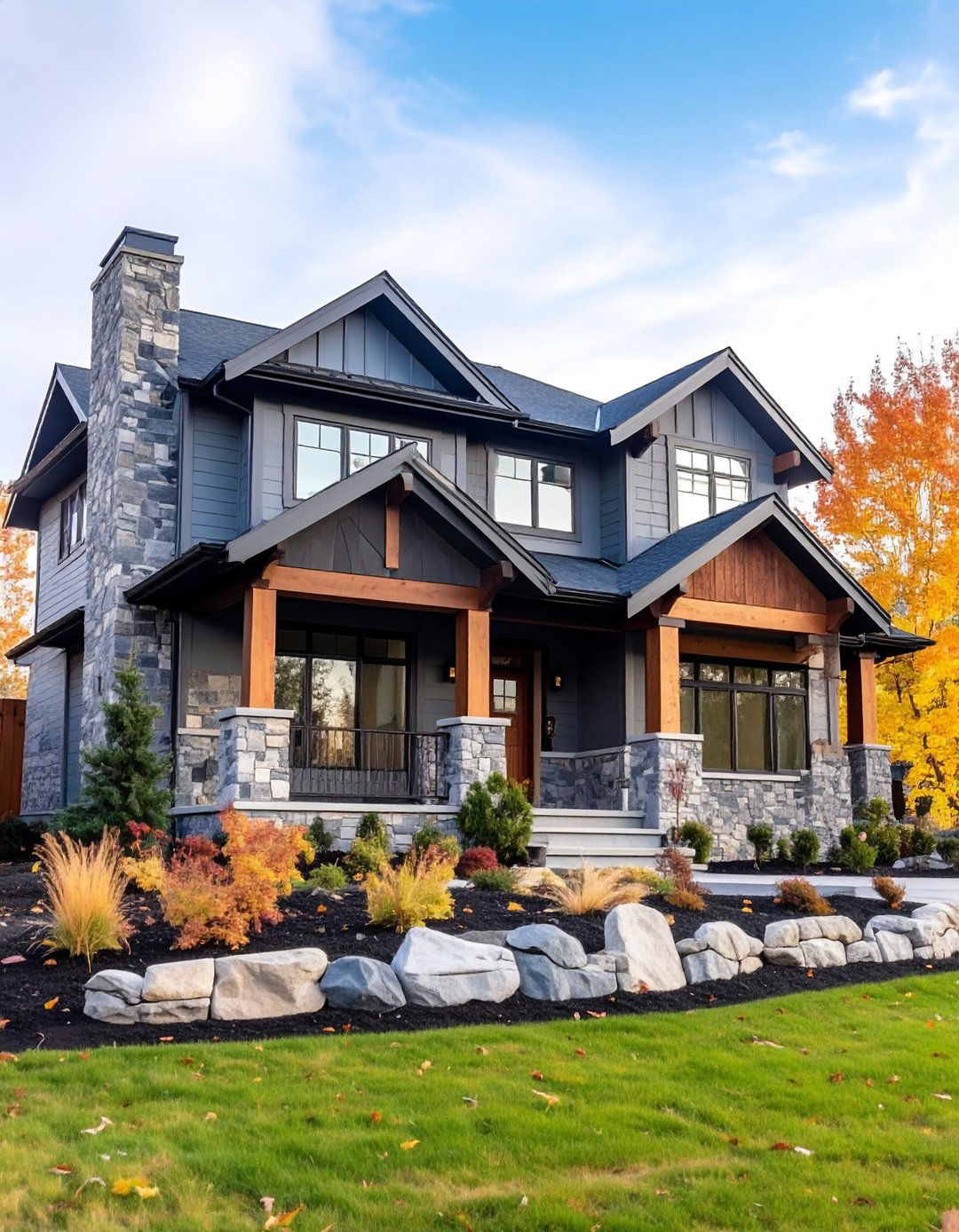
Unlike full-depth masonry, lightweight stone-veneer exterior wainscoting delivers the muscular look of quarried rock without heavy footings. Interlocking panel systems screw directly to framed walls, so most DIYers finish a ranch in a weekend. Because cultured-stone mixes include iron oxides, the coloration runs through the veneer, resisting chips and ultraviolet fading. Behind the wainscoting, a rain-screen mat and flashing at transitions keep moisture from pooling against sheathing. The tactile surface hides splash dirt and visually anchors tall façades, especially paired with lighter siding above. Color palettes range from cool granite grays to warm limestone creams, letting you echo regional geology or accent paint. Durability, speed, and unmistakable texture make stone-veneer wainscoting a go-to refresh when resale value matters most.
4. Modern Metal Panel Wainscoting with Industrial Flair
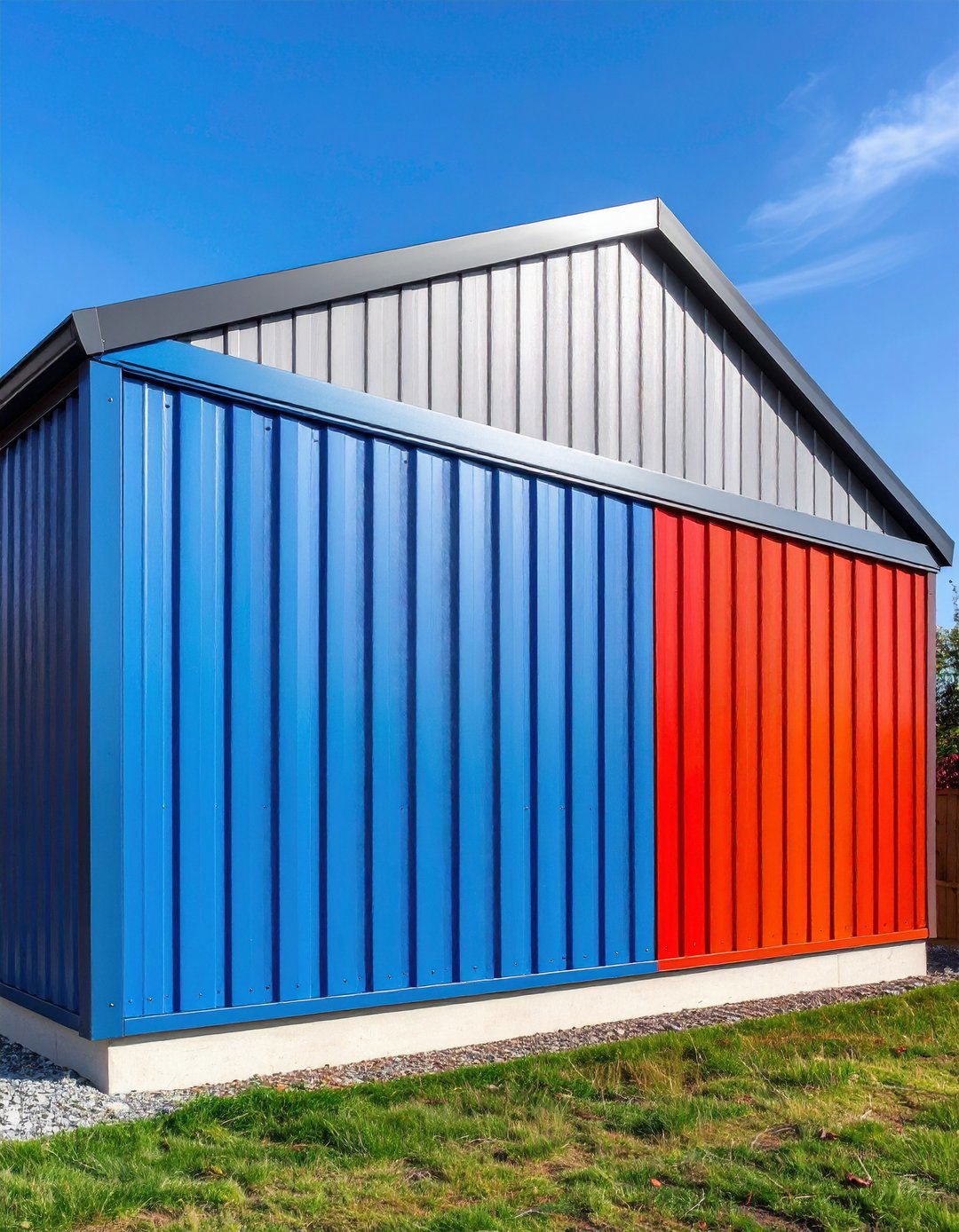
Looking for sleek resilience, urban homeowners tap ribbed metal-panel exterior wainscoting to echo factory-loft aesthetics. Galvanized or powder-coated steel sheets snap into concealed fasteners, avoiding visible screws and leaving crisp vertical reveals. Choose 26- to 29-gauge panels; they’re light enough for DIY installation yet tough against lawn-tractor stones. A high-build polyester or PVDF finish provides color retention and adds a subtle satin sheen that reflects evening lights. Running battens or hat-channels beneath the wainscoting creates a ventilated cavity, preventing condensation on cold nights. Because metal introduces a cooler texture, many pair it with warm cedar siding or rust-colored fiber-cement above for balance. The end result feels modern, virtually maintenance free, and undeniably eye-catching against minimalist landscaping.
5. Fiber-Cement Wainscoting for Low-Maintenance Strength
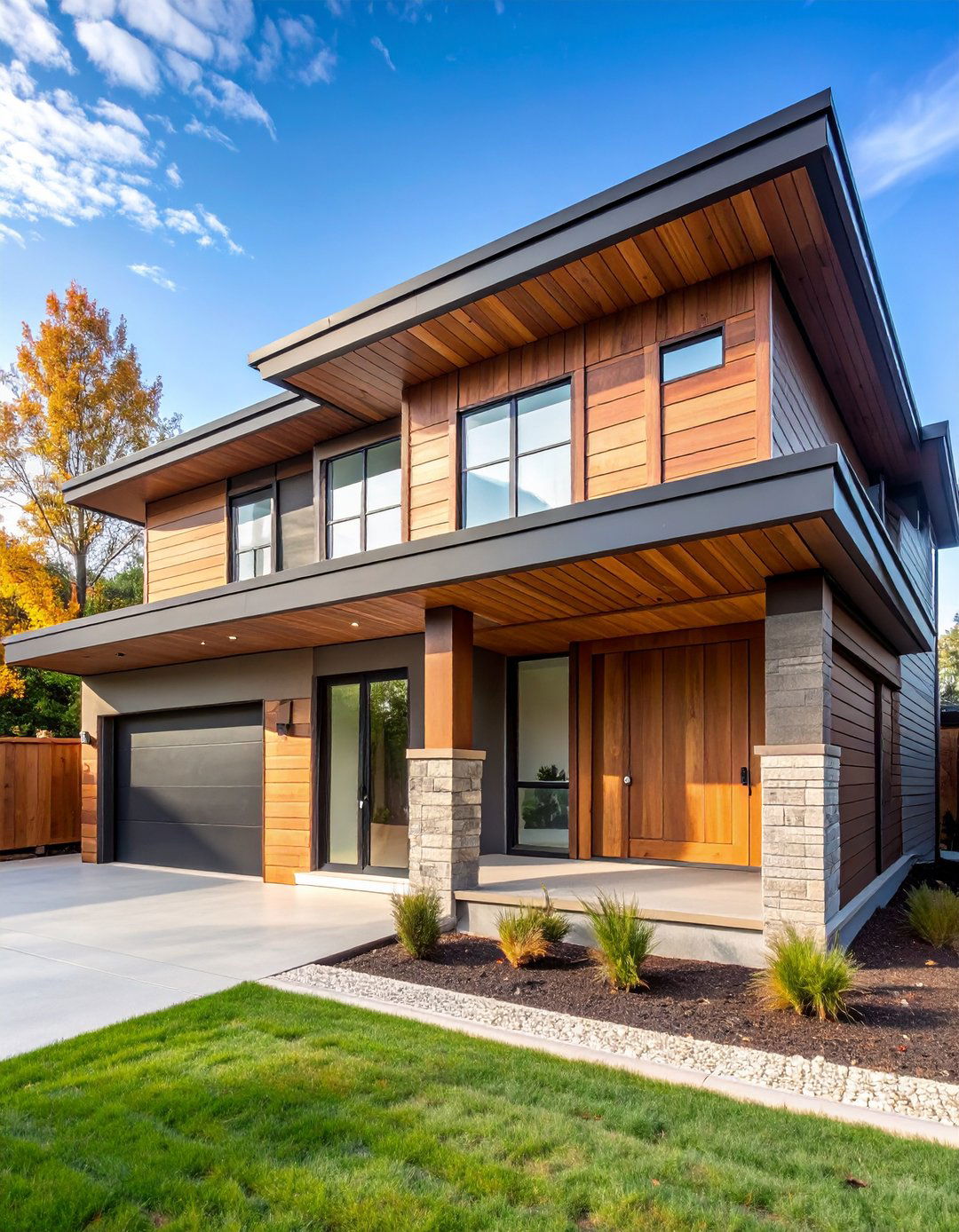
Experts hail fiber-cement exterior wainscoting as the sweet spot between rugged durability and design flexibility. The composite of Portland cement, sand, and cellulose fibers shrugs off termites, woodpeckers, fire, and relentless UV rays. Manufacturers press panels with realistic wood grain, smooth stucco, or contemporary grooved textures you can paint any shade. Unlike vinyl, fiber-cement tolerates dark colors in hot climates without warping, making bold base accents stress-free. Installers leave a 6-millimeter gap and flash joints; factory-primed boards then accept high-quality exterior paint for decades. Because weight is moderate, one helper and a siding nailer can skirt an average wall before lunchtime. Homeowners chasing longevity with minimal upkeep find fiber-cement wainscoting a confidence-building investment.
6. Brick-Look Panel Wainscoting to Add Heritage Charm
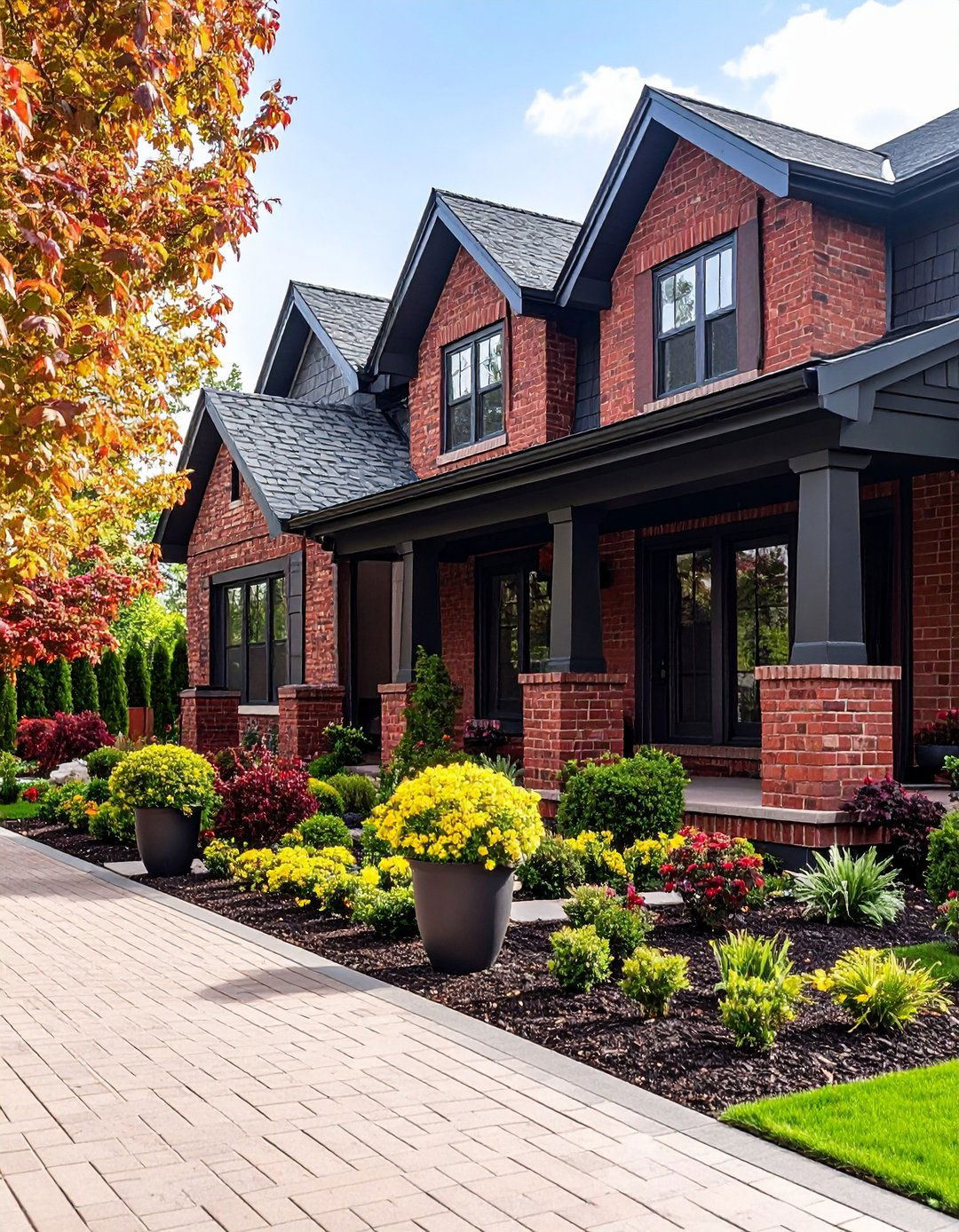
What evokes historic brownstones more than red brick? Brick-look exterior wainscoting delivers that heritage vibe without masonry labor. Polyurethane or high-density EPS panels come with molded grout lines and kiln-baked color blends that fool the eye. Panels cut easily with a circular saw, then interlock to speed installation around porches and garages. Apply adhesive plus screws, foam any gaps, and finish corners with matching trim blocks for professional-grade realism. Because panels weigh little, you skip structural bracing yet gain authentic depth and satisfying knock-on-brick sound. Seal top edges with metal flashing below siding to steer runoff and protect foam cores from UV. Pair warm brick wainscoting with creamy lap siding above to channel cozy cottage nostalgia on even new builds.
7. Reclaimed Wood Wainscoting for Eco-Friendly Warmth
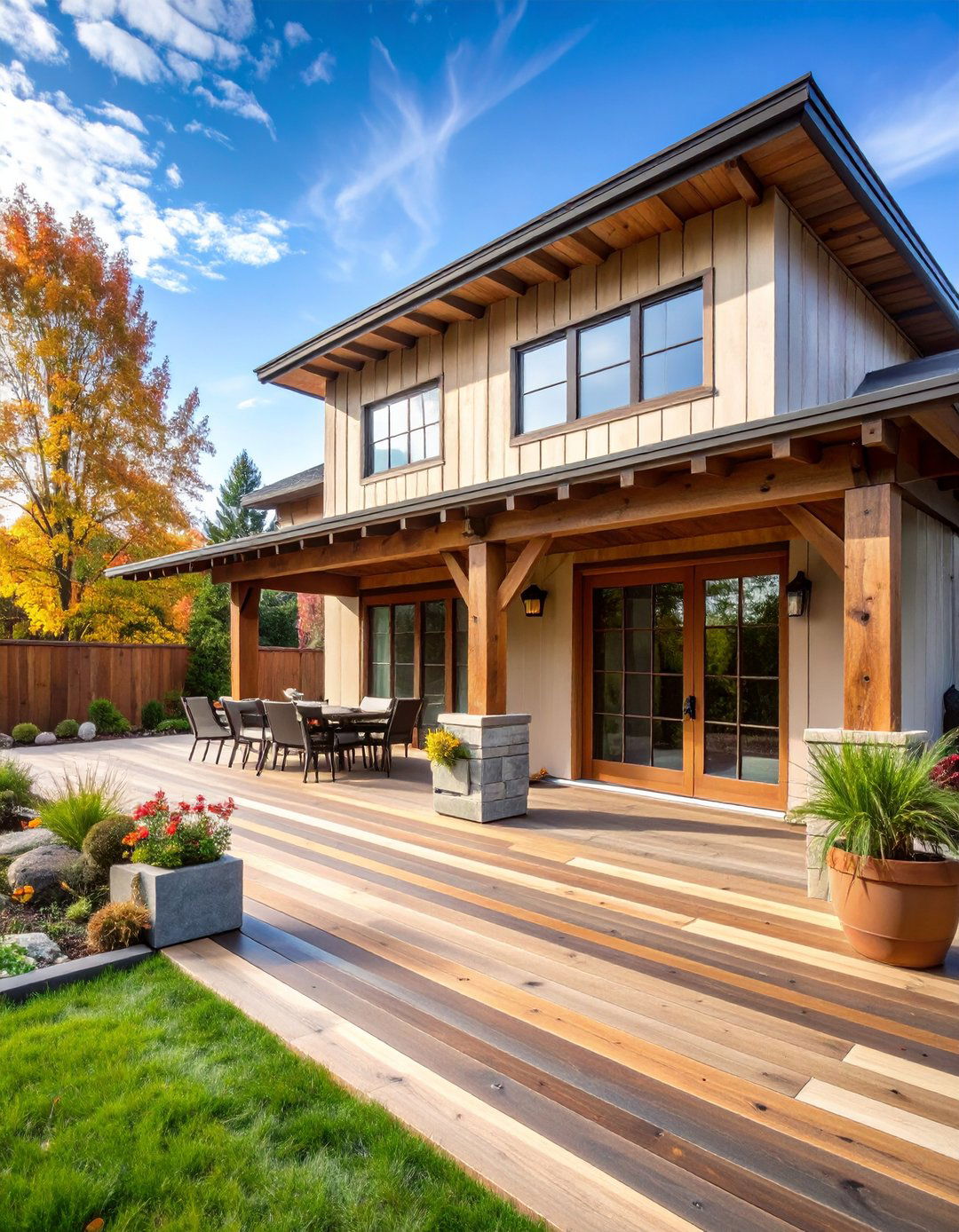
Consider salvaged barn boards when you want exterior wainscoting that whispers history and keeps landfill overflow at bay. Reclaimed pine, oak, or fir arrives weather-tempered, meaning natural oils and decades of patina resist further decay. Brush boards with a steel wire, then treat with borate solution to deter any leftover insects before mounting. Because lengths vary, lay planks in an intentional random pattern, staggering joints for a casual, artisanal look. A plant-based exterior oil locks in color without plastic-sheen, allowing the grain to breathe through seasonal shifts. Pair reclaimed-wood wainscoting with matte-black windows and native grasses, creating a grounded modern-rustic composition. Each scuff, nail hole, and saw mark tells a story visitors notice long before stepping inside.
8. Vertical Cedar Wainscoting to Highlight Height
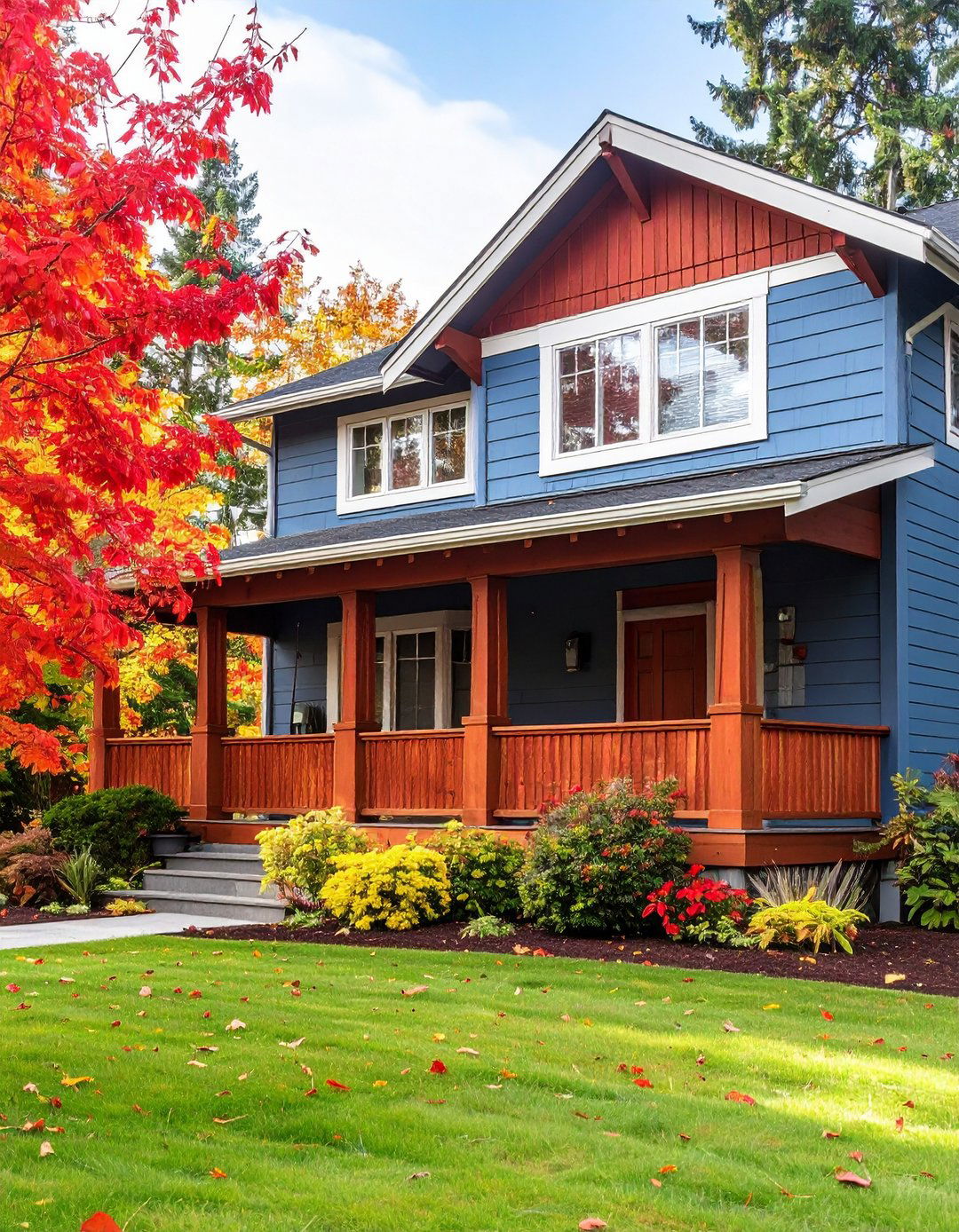
With slender silhouettes, vertical cedar-slat exterior wainscoting visually stretches low façades, making single stories feel stately. Clear-grade Western red cedar resists rot and insects naturally, while its reddish hue lends warm sophistication. Install boards with 6-millimeter gaps on furring strips to encourage air flow and allow seasonal movement. A penetrating semitransparent stain preserves color for years; otherwise, cedar weathers to a coastal-silver patina many love. Cap the slats under the sill with a stainless-steel mesh to block critters from nesting behind the rain screen. Because cedar’s grain is lively, pairing it with smooth composite siding above balances texture and creates intentional contrast. The finished composition feels tall, warm, and authentically craftsman without adding extra stories or expensive structural work.
9. PVC Beadboard Wainscoting for Worry-Free Porches
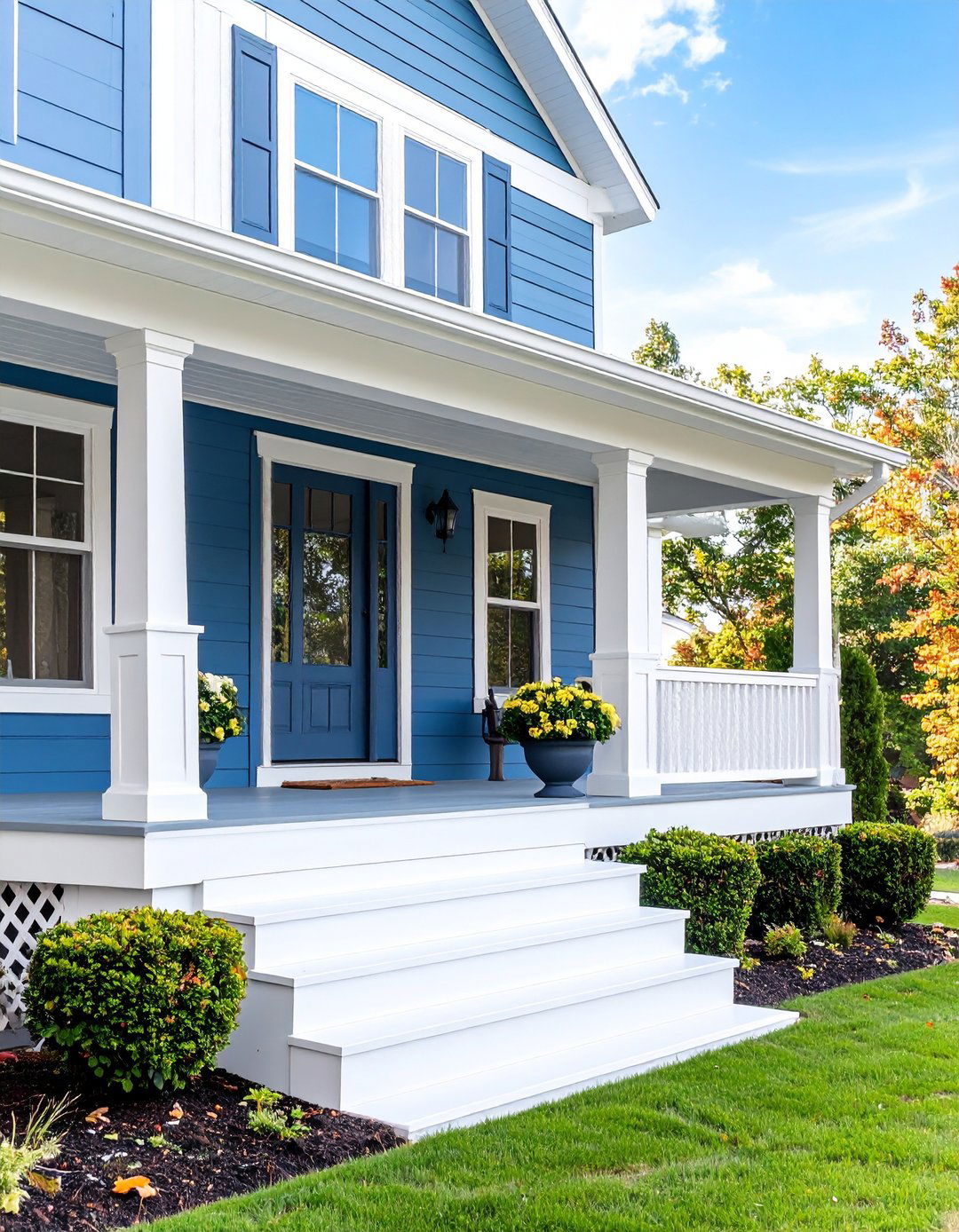
Certainly porch skirt nightmares vanish when you swap swelling pine for PVC beadboard exterior wainscoting. The cellular PVC core cannot absorb water, so puddles, snow piles, and sprinkler overspray leave no stains. Factory white boards arrive with crisp v-grooves; a quick scuff and acrylic paint open unlimited color options. Cutting is dust-free using a standard carbide blade, and hidden-clip fasteners eliminate face-nail maintenance headaches. Because PVC expands with heat, leave proper gaps and paint darker hues only on shaded elevations to stay warranty-safe. A slim drip cap at the top diverts water, protecting the siding interface and keeping bead grooves pristine. Low effort yet high charm, PVC beadboard wainscoting lets busy households enjoy tidy porch facings year-round.
10. Decorative Concrete Wainscoting with Stamped Patterns
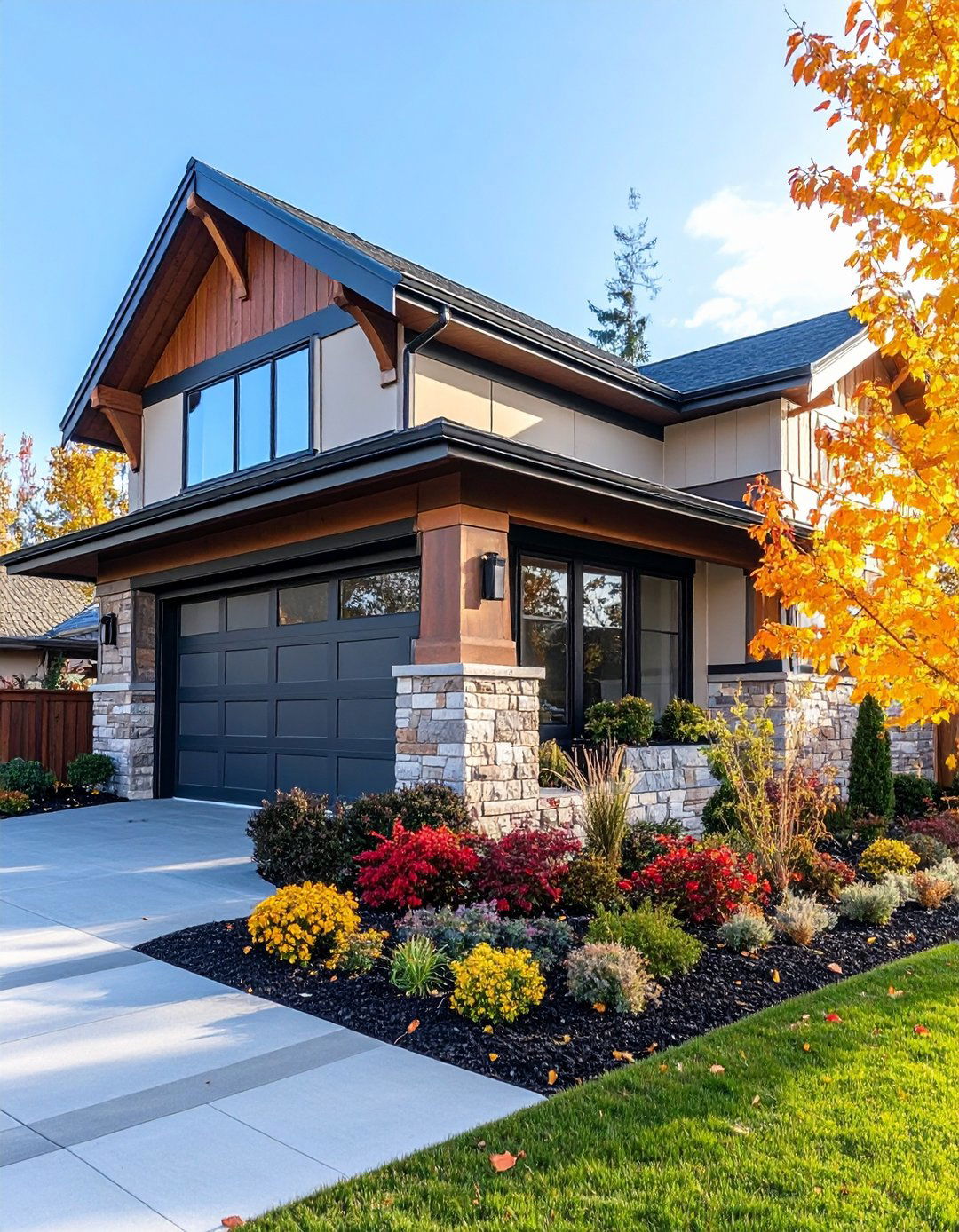
Surprisingly versatile, decorative concrete exterior wainscoting turns raw cement into faux stone, slate, or even wood planks. Contractors pour a four-inch wainscot wall in place, then press rubber stamps as the mix firms, embedding lifelike relief. Integral color pigments permeate the concrete, while powder antiquing agents accent grooves for credible shadow depth. Once sealed, the wainscoting stands up to de-icing salt, lawn chemicals, hail impact, and playful soccer balls. Tie-in dowels anchor the pour to foundation, and fiber reinforcement minimizes cracking across temperature swings. Homeowners can even acid-stain cured panels later, refreshing color without demolition when tastes evolve. If you crave custom pattern freedom plus bulletproof longevity, stamped-concrete wainscoting merits a serious look.
11. Mixed-Material Wainscoting Blending Wood and Metal
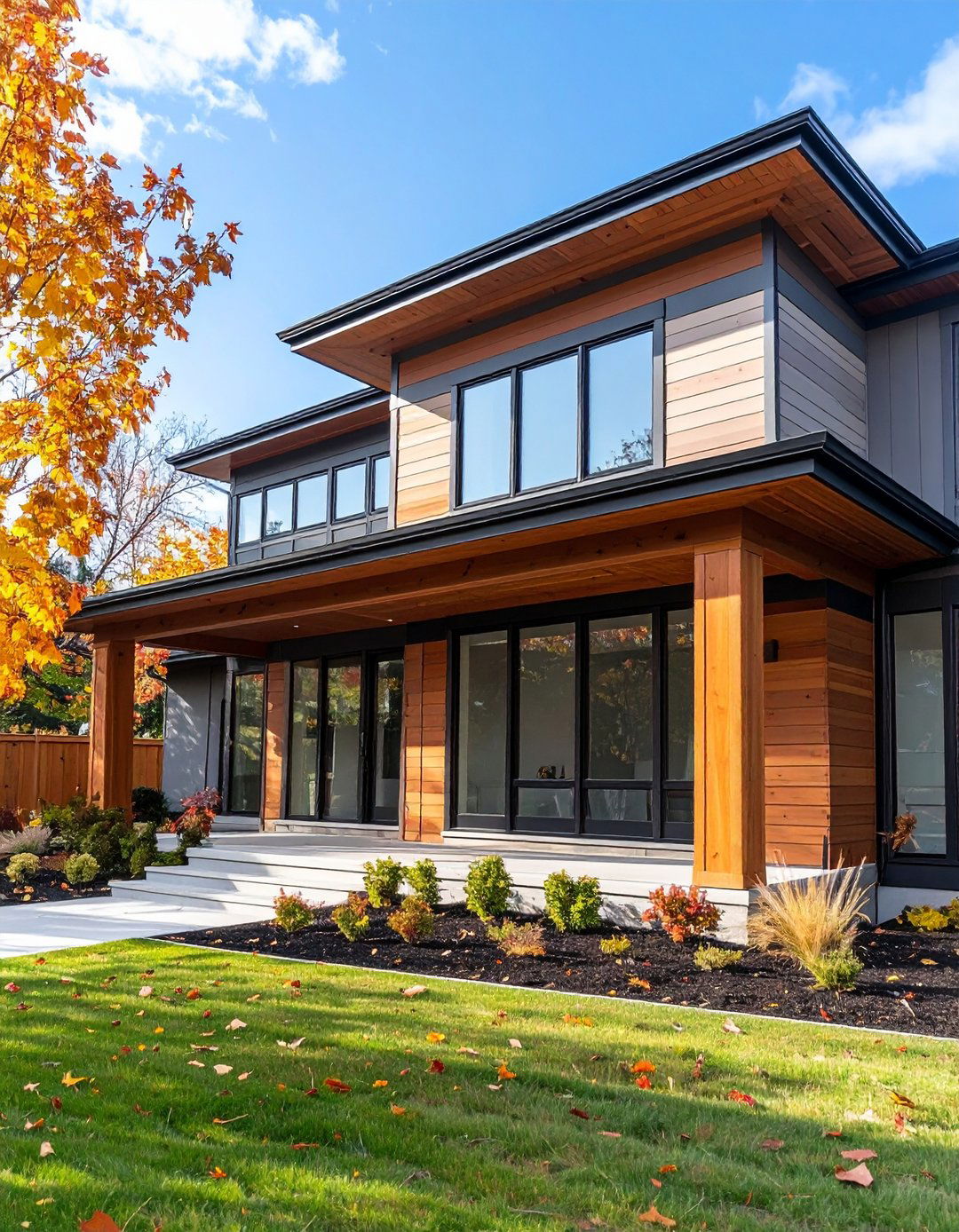
Another eye-catching approach pairs cedar planks with narrow black aluminium battens, creating hybrid exterior wainscoting that feels bespoke. Planks mount first over breathable membrane; battens then screw through, leaving deliberate negative space for rhythmic shadow play. Contrasting textures let you echo window mullions below while softening heavier steel railings above. Seal cedar with a matte UV oil; powder-coat battens to match door hardware for coherent detailing. Because fastener lines hide behind battens, maintenance is simpler and the design reads impeccably tailored. Leave a half-inch reveal above grade to prevent wicking, and flash top edges for mixed-material longevity. The fusion underscores contemporary aesthetics without abandoning natural warmth, offering neighbors something fresh to admire.
12. Thermal-Insulated Wainscoting to Boost Energy Efficiency
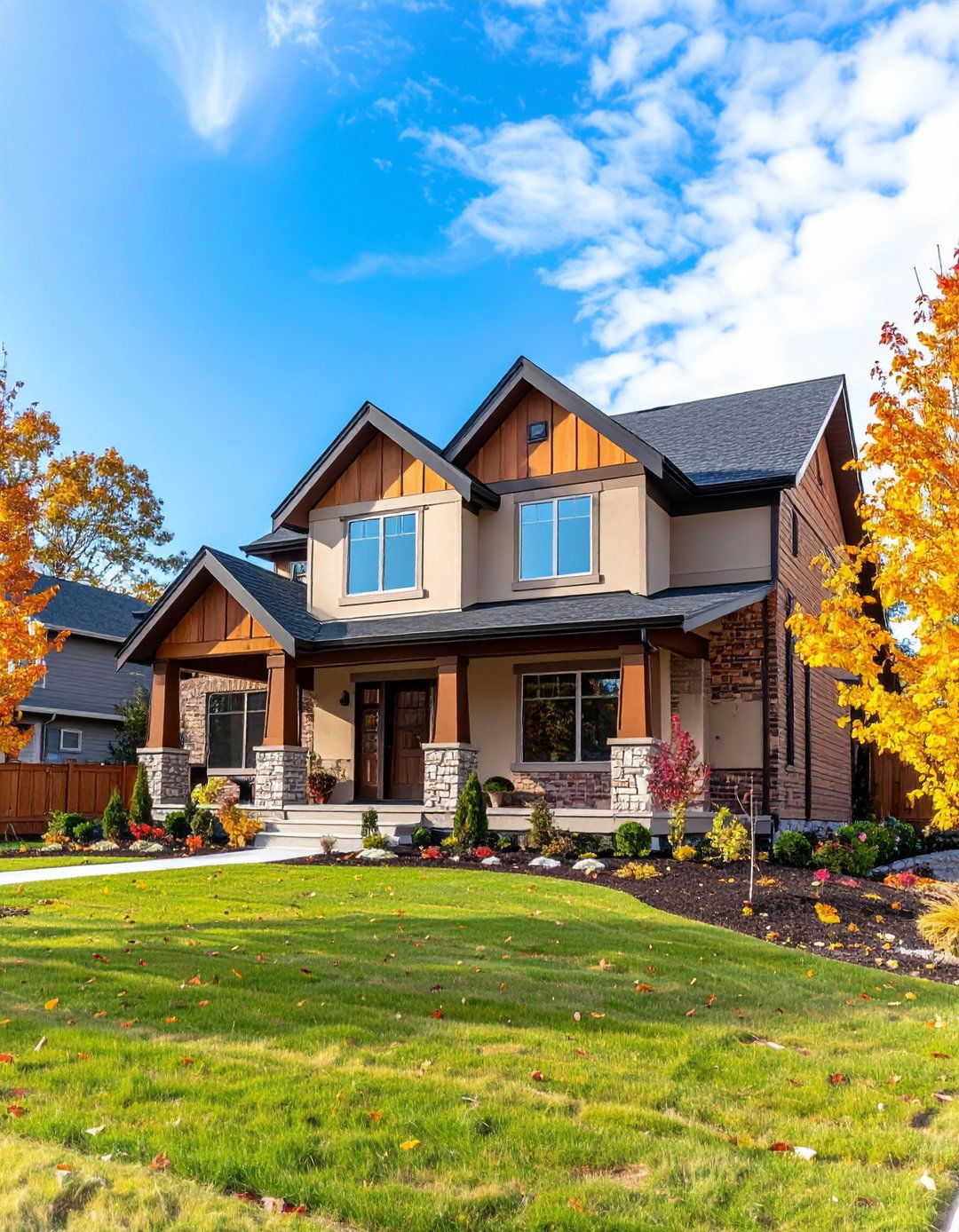
As energy codes tighten, insulated exterior wainscoting panels featuring integrated foam cores cut heating costs where drafts start. Structural insulated sheathing attaches directly to studs, then accepts brick, stucco, or composite facers depending on design vision. Continuous R-5 to R-10 beneath the sill breaks thermal bridging, reducing condensation on cold sheathing and protecting finishes. Tongue-and-groove edges lock tight, while drainage channels behind the wainscoting steer incidental water safely downward. Add a coated metal cap flashing at the upper joint, and the assembly doubles as a rain-screen. Acrylic stucco facers offer limitless tint choices, letting energy-savvy homeowners stay stylish without extra layers. Expect immediate comfort gains in basement media rooms, proving insulated wainscoting can pay dividends well beyond looks.
13. Color-Blocked Wainscoting for Bold Exterior Statements
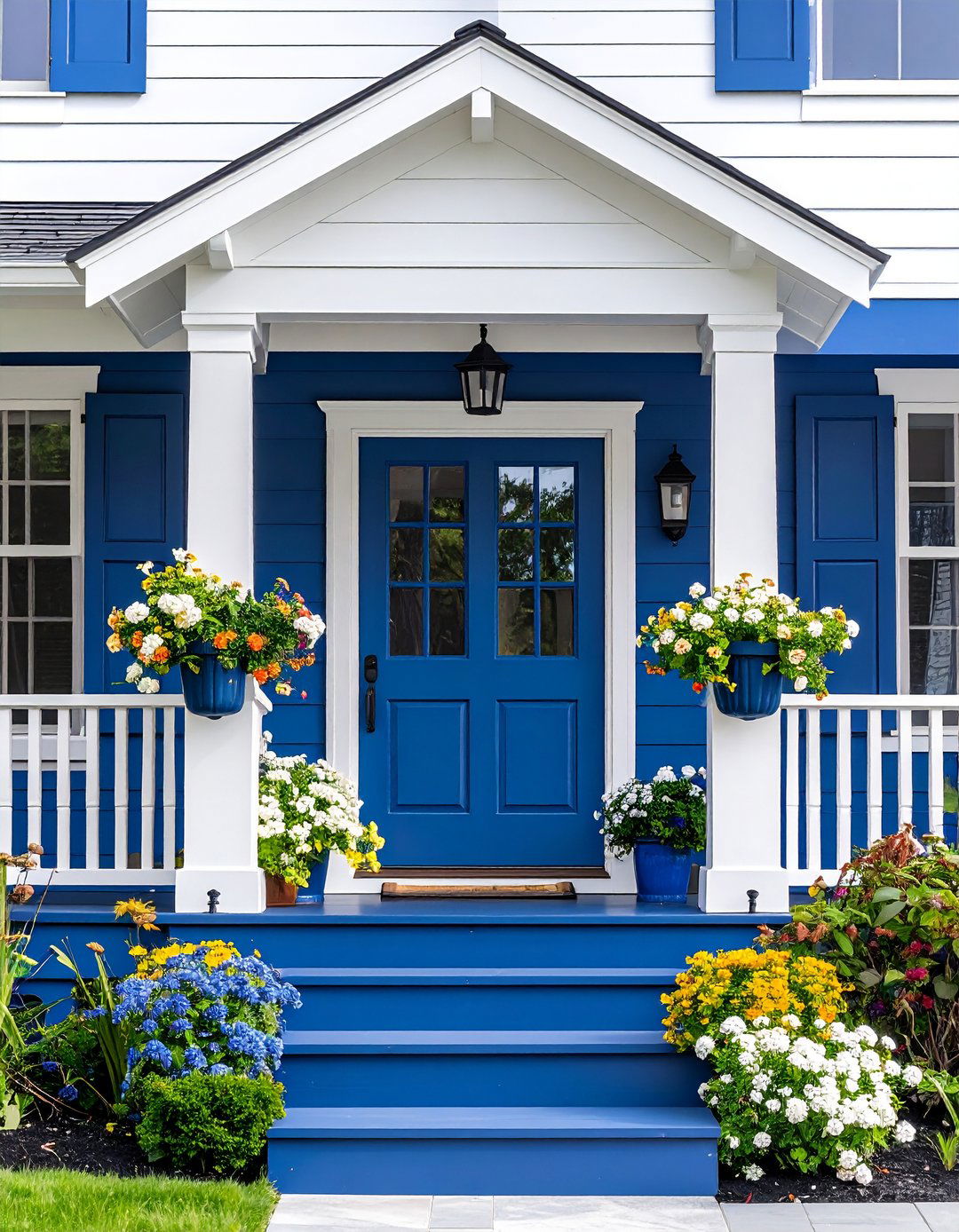
To inject personality fast, homeowners paint exterior wainscoting a saturated tone that contrasts sharply with upper walls. Think navy skirt beneath crisp white shingles or burnt-orange wainscoting under charcoal fiber-cement for autumn drama. The color block splits elevation visually, lowering perceived height on tall homes or adding breadth to narrow cottages. High-build acrylic or mineral-based paints tolerate UV better on near-grade locations that endure snow shovels and muddy paws. Tape a level line first, brush downward strokes to avoid lap marks, and finish with a durable clear coat. Changing only the wainscoting color costs little yet revitalizes bland vinyl or aging stucco in a single weekend. Neighbors will spot the makeover immediately, proving strategic paint swatches outperform pricier architectural overhauls.
14. Curved Wainscoting to Complement Rounded Architecture
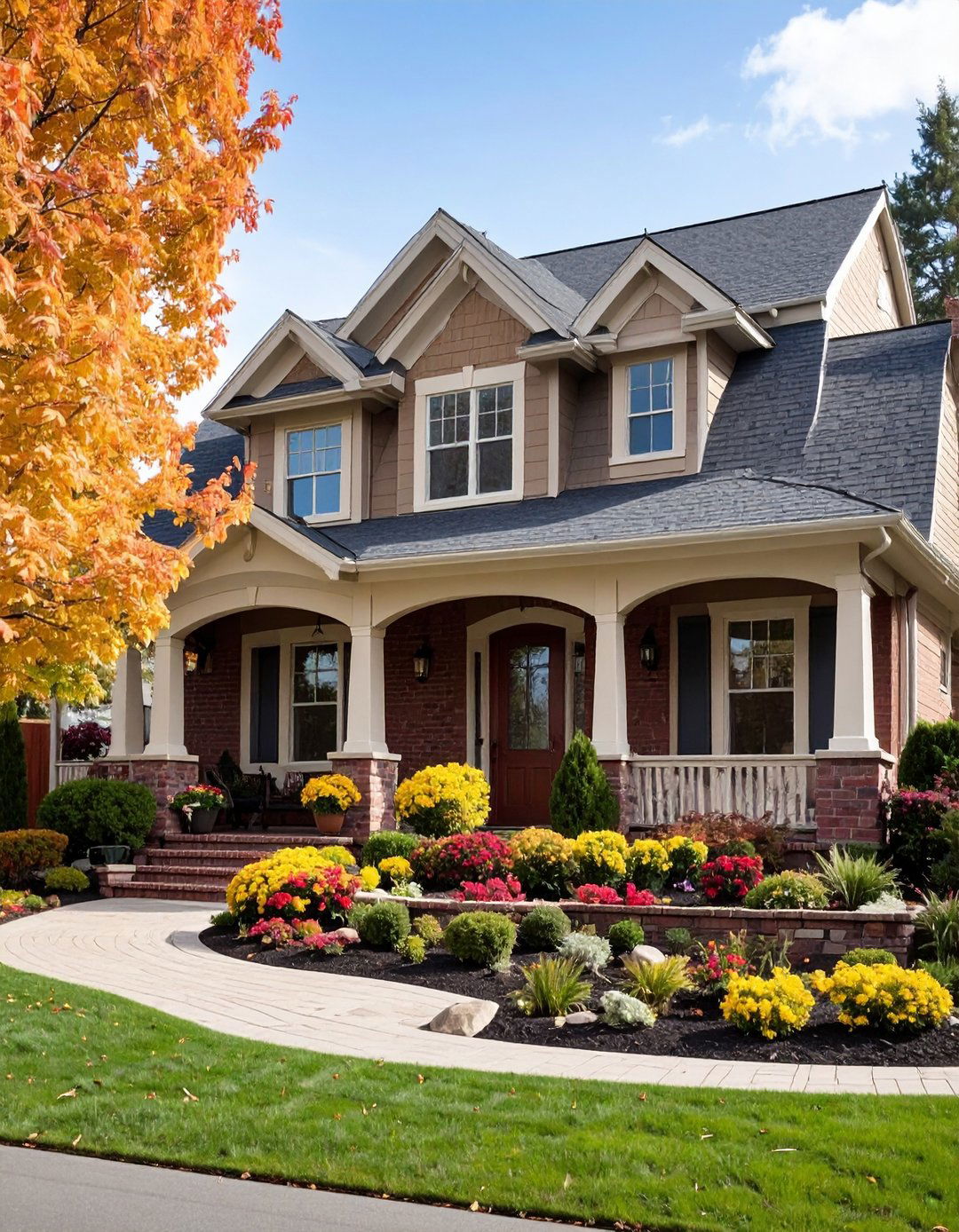
An arched porch or turret deserves exterior wainscoting that follows its sweep rather than awkwardly chopping curves into flats. Bending kerfed plywood or flexible PVC panels lets installers wrap radii as tight as 24 inches without cracking. After fastening, artisans overlay brick veneer, beadboard, or stucco finish coats, maintaining uninterrupted texture around the arch. A continuous sill flashing curves, steering water away from lower sheathing and preventing drips on stone. Because fewer butt joints exist, maintenance over time drops and caulk lines stay nearly invisible to passersby. Curved wainscoting costs slightly more in labor but yields photo-worthy details that turbo-charge property listings. Architects often highlight the arc further by uplighting the curved skirt at night, creating a luminous welcome.
15. Oversized Battens Wainscoting for Contemporary Drama
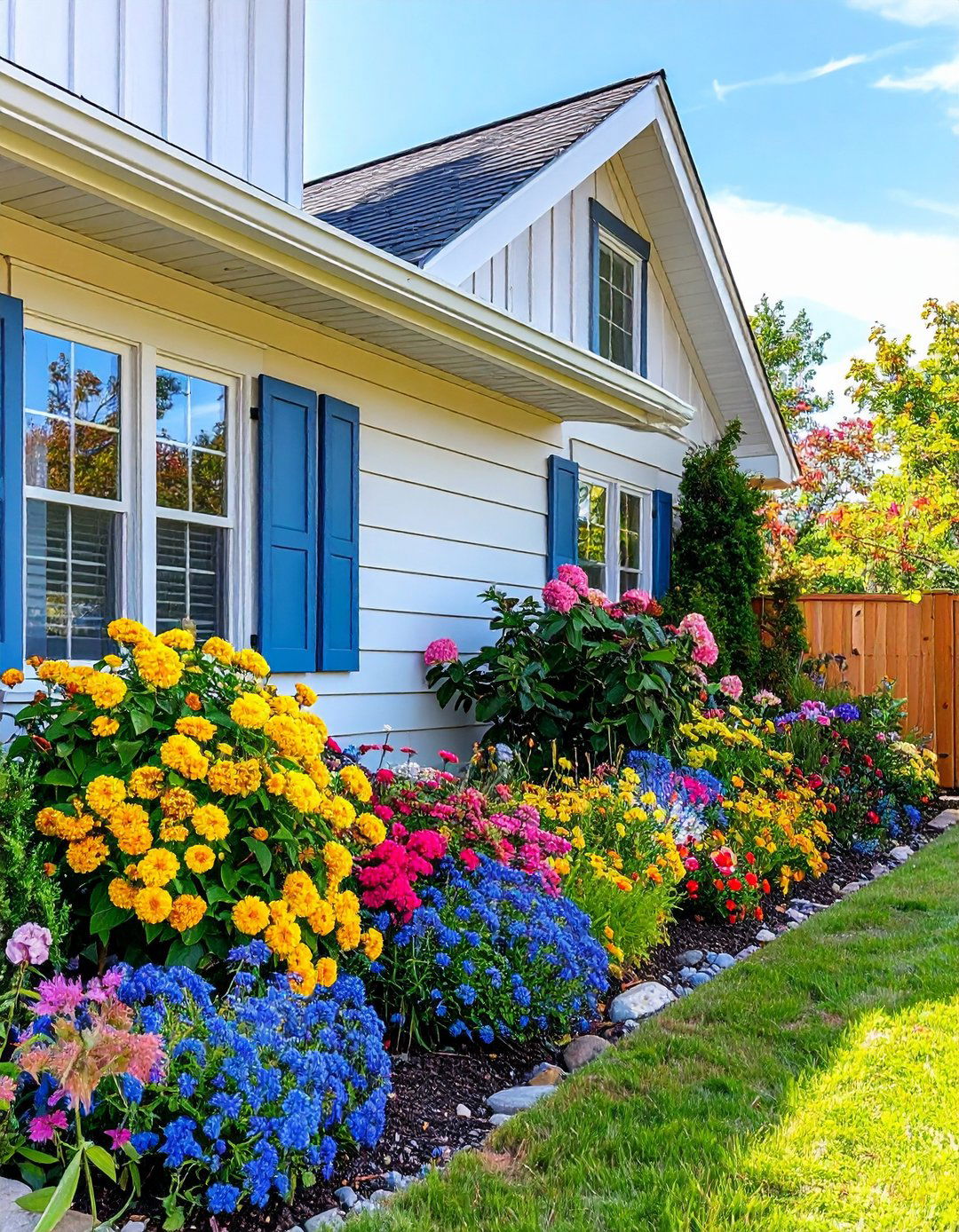
To push board-and-batten into the modern realm, designers are upsizing battens to three-inch widths across exterior wainscoting. The chunky ribs cast pronounced shadows, adding depth that reads architectural rather than strictly decorative. Spacing typically doubles panel width, so the façade gains a bold rhythm reminiscent of contemporary art museums. Composite battens resist cupping and paint uniformly, critical when each piece commands visual attention. Installers fasten battens through sheathing into blocking, ensuring thicker material sits flush and doesn’t trap water. Choose colors with strong contrast—matte black ribs over dove-gray boards amplify depth under changing daylight. Oversized-batten wainscoting pairs beautifully with minimalist landscaping and metal roofs, nailing the ‘modern farmhouse’ brief.
16. Stone-Caped Wainscoting Framing Raised Flower Beds
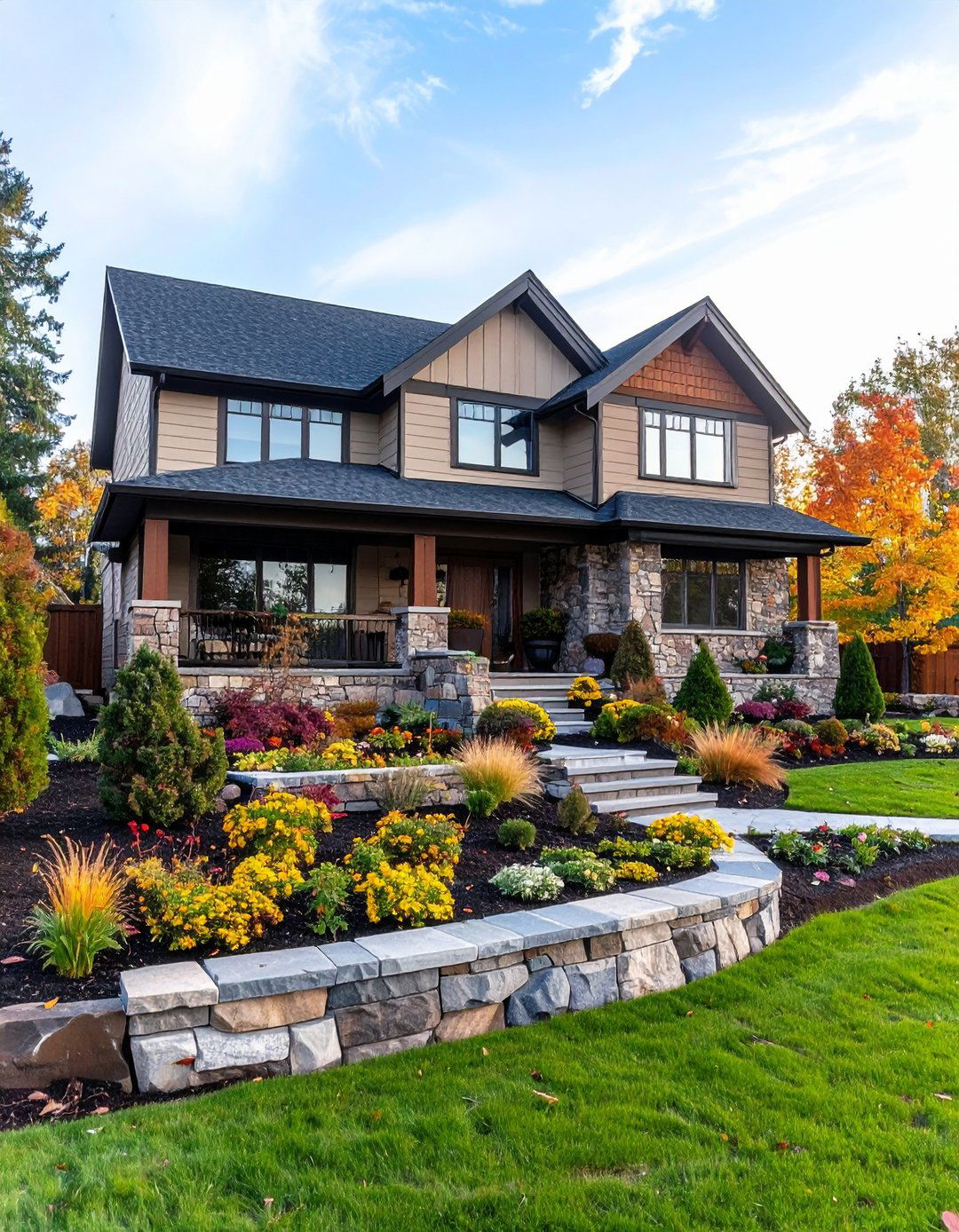
For an integrated landscape look, some homeowners top exterior wainscoting with matching stone caps that double as planter ledges. The capstone projects one inch, channeling rainwater away from veneer seams and providing a perch for pots or mugs. Running stone veneer only up to planting-soil height saves material costs while visually tying house and garden together. Use non-organic backfill behind the wall to prevent moisture wicking and freeze expansion against sheathing. Landscape lighting under the cap highlights texture at night, guiding guests toward walkways without harsh glare. Because the wainscoting cap becomes functional hardscape, it quickly justifies its budget during summer cocktail evenings. The strategy works with brick, cultured stone, or concrete block, letting you match existing retaining walls seamlessly.
17. Rain-Screen Wainscoting to Keep Walls Dry
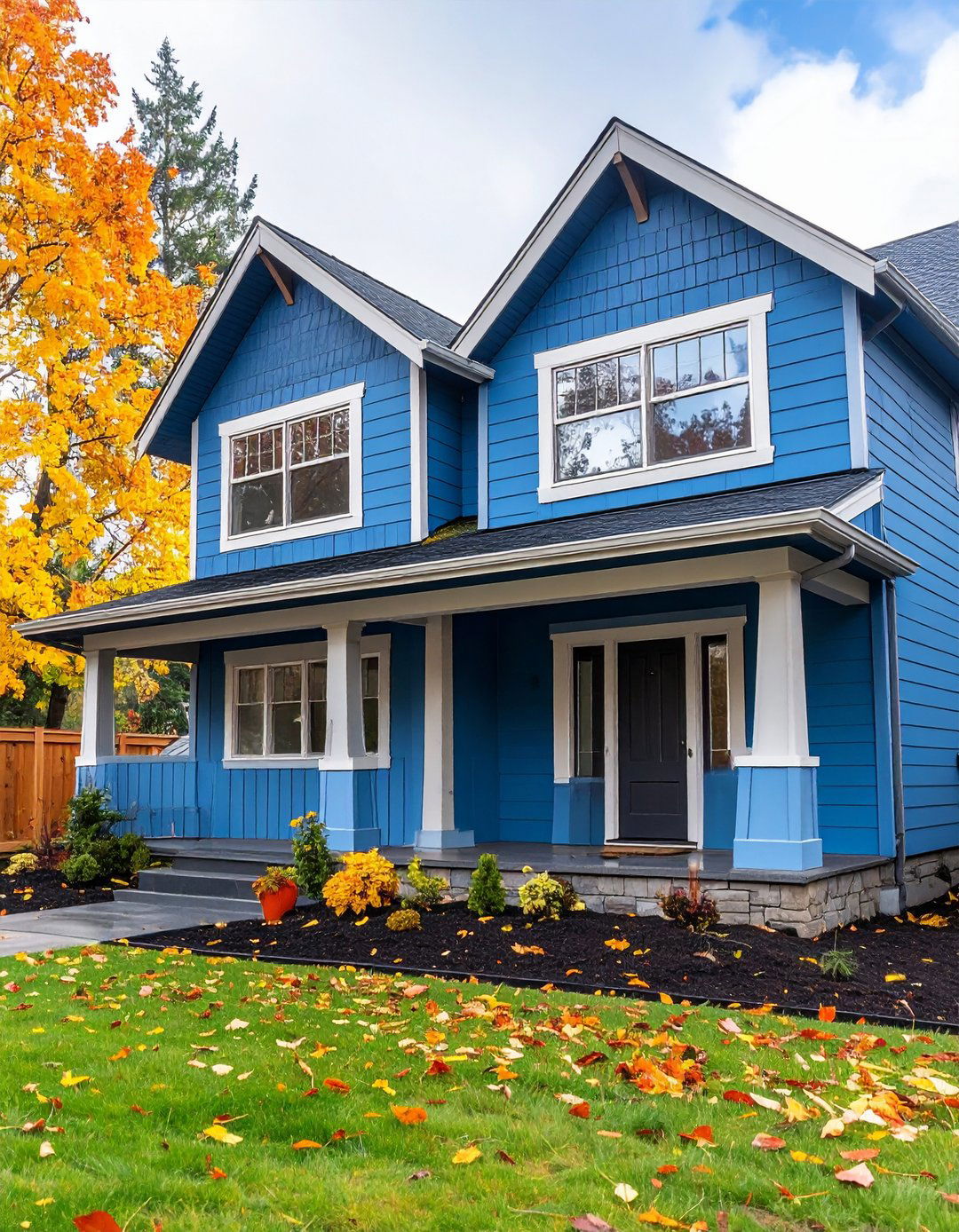
Owing to increasingly intense storms, architects specify rain-screen exterior wainscoting assemblies that let cladding dry out quickly. Here, battens or specialty drain mats space boards from sheathing, creating a vertical cavity open at top and bottom. When wind-driven rain sneaks behind the wainscoting, gravity and airflow whisk moisture away before rot or mold sets in. Corrosion-resistant bug screen guards the cavity ends, stopping wasps while maintaining breathability. Flash all penetrations meticulously; a cheap roll of peel-and-stick membrane prevents costly callbacks later. Because siding dries faster, paint lasts longer and homeowners reduce scraping cycles—a sustainability win rarely advertised. Rain-screen wainscoting marries traditional charm with building-science smarts, future-proofing façades against a changing climate.
18. Illuminated Wainscoting with Integrated LED Strips
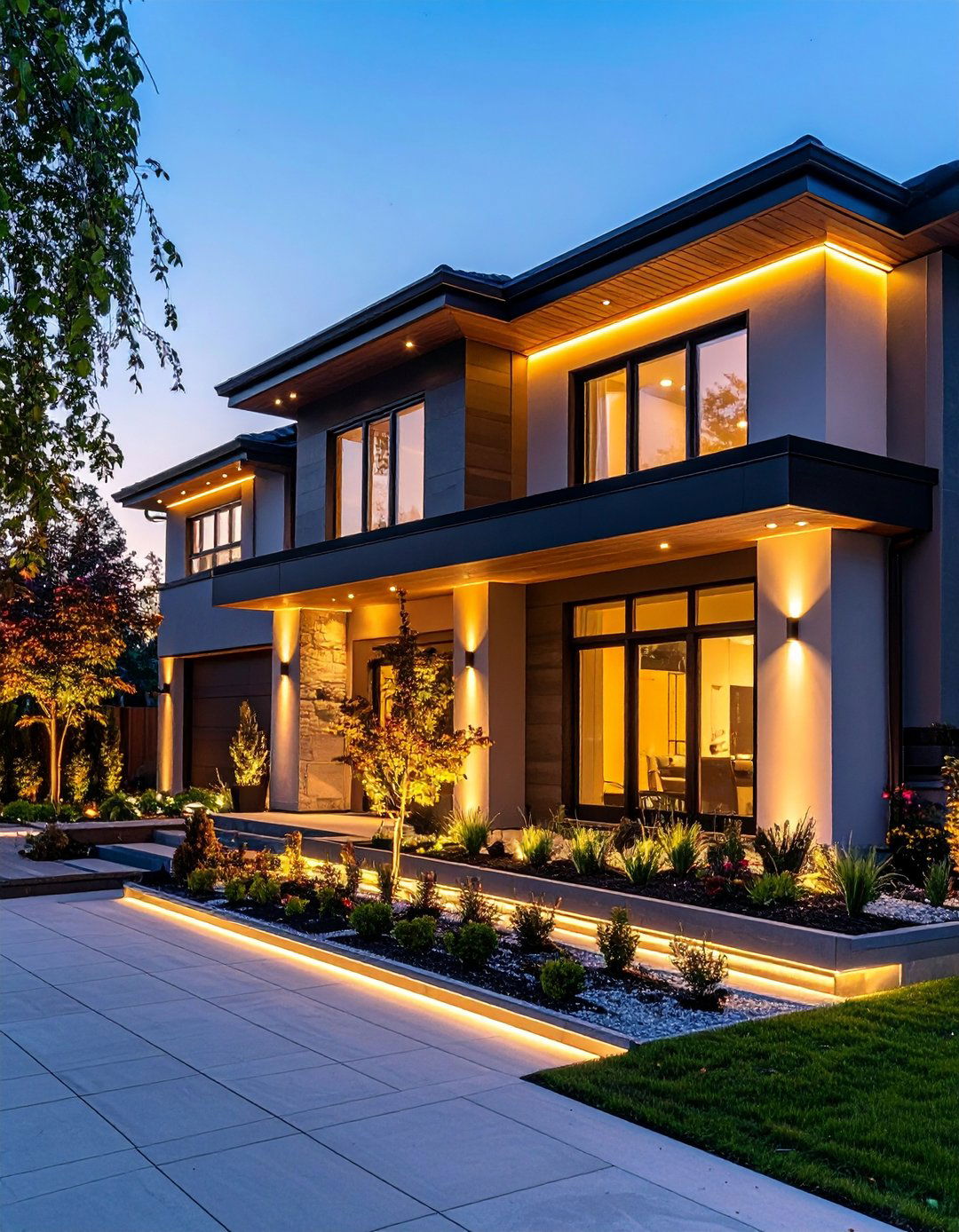
After dusk, subtly lit exterior wainscoting transforms ordinary walls into ambient beacons guiding visitors up the path. Low-profile aluminum channels with diffused LED strips tuck beneath the wainscoting cap or inside vertical reveals. Choose 2700-Kelvin warm lights for hospitality, or color-changing smart LEDs that sync with seasonal celebrations. Because strips sip only watts, energy cost stays negligible even when lights run dusk-to-dawn for security. Seal channels with silicone and use exterior-rated drivers mounted inside ventilated boxes to outlast monsoon humidity. Smart home integrations let homeowners dim wainscoting accents from phones, tailoring mood for barbecue nights or quiet reading. Light and architecture blend here, proving wainscoting can be practical, decorative, and downright cinematic.
19. High-Contrast Two-Tone Wainscoting to Define Levels
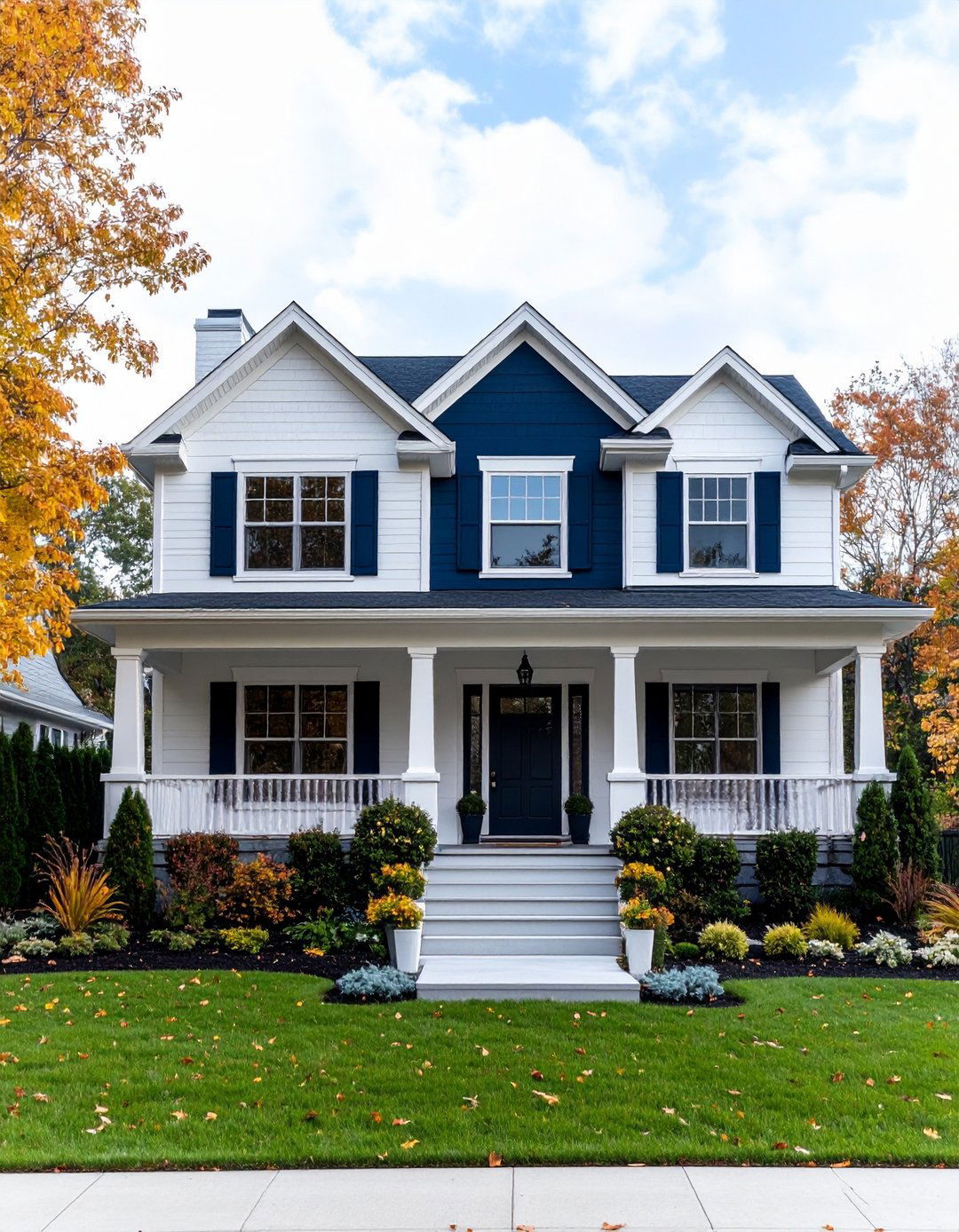
Unlike subtle color blocks, high-contrast two-tone exterior wainscoting uses opposite shades to clearly separate base and body. A white stucco upper above deep graphite wainscoting, for instance, frames windows like gallery artwork. This sharp line accentuates architecture, making simple ranch homes appear crisply deliberate rather than sprawling. Dark lower tones also hide mud splashes and mulch stains, reducing cleaning efforts for high-traffic front yards. Use painter’s tape along the drip cap, apply lighter color first, let cure, then roll on the darker shade. Ensure both paints share sheen level; mismatched gloss can create unwanted reflections at midday. Two-tone wainscoting is an affordable technique that still delivers architectural punch worthy of curb-appeal contests.
20. Smart-Clad Wainscoting with Built-In Sensor Slots
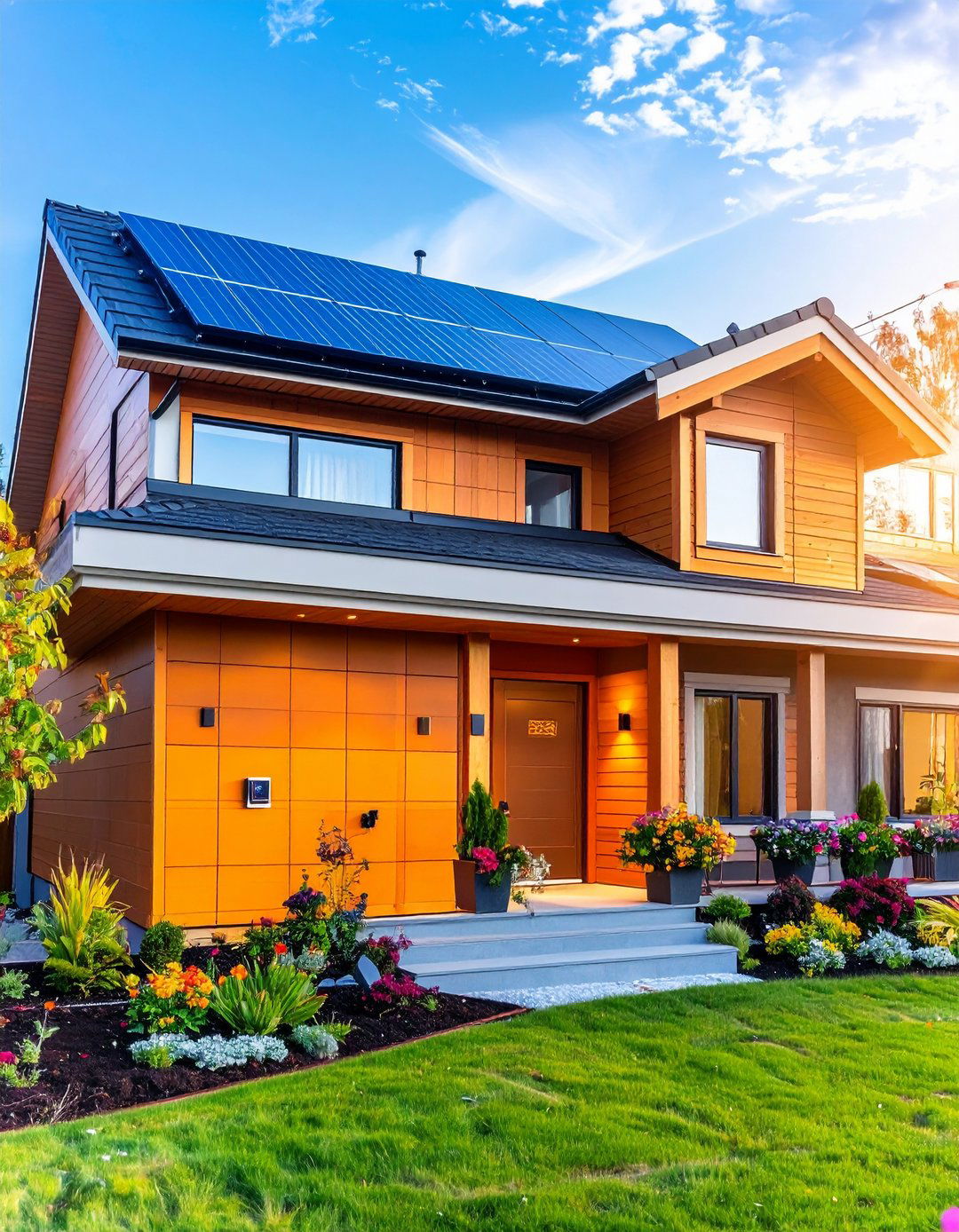
Finally, technology meets trim with smart-clad exterior wainscoting featuring discreet slots for moisture and temperature sensors. Composite panels arrive pre-routed; you simply snap wireless devices in place and sync them to the home hub. Real-time data alerts you if splashback humidity spikes, allowing proactive caulk repairs before rot takes hold. Solar micro-cells laminated on southern faces trickle-charge sensor batteries, eliminating upkeep and keeping electronics discrete. Panels still boast standard benefits—impact resistance, crisp grooves, and paintable factory primer—so aesthetics never suffer for function. Installers caulk sensor ports, ensuring weather seals remain tight around the hidden tech. Smart-clad wainscoting proves that even the humblest architectural band can join the Internet of Things revolution tastefully.
Conclusion:
Exterior wainscoting may skirt the lowest portion of your walls, yet its influence on style and protection is immense. From stone veneer strength to color-blocked whimsy and smart-clad responsiveness, each approach balances beauty with real-world performance. By choosing materials suited to climate, adding thoughtful flashing, and respecting proper ventilation gaps, you guarantee longevity. Equally, playing with scale, lighting, or mixed textures unlocks curb-appeal gains that rival full siding replacements for a fraction. Pick one idea that resonates, gather the right fasteners, and let your wainscoting redefine first impressions.


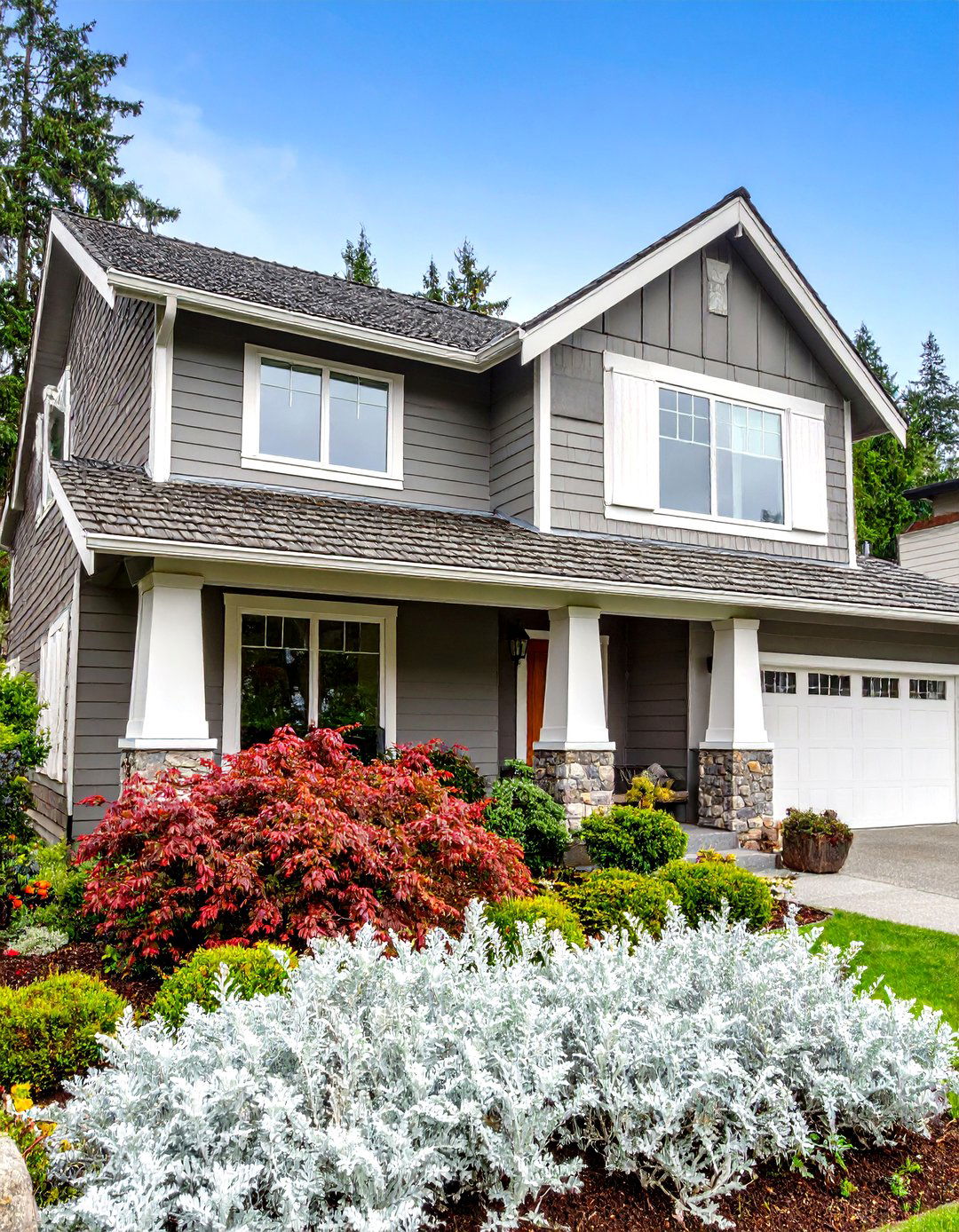
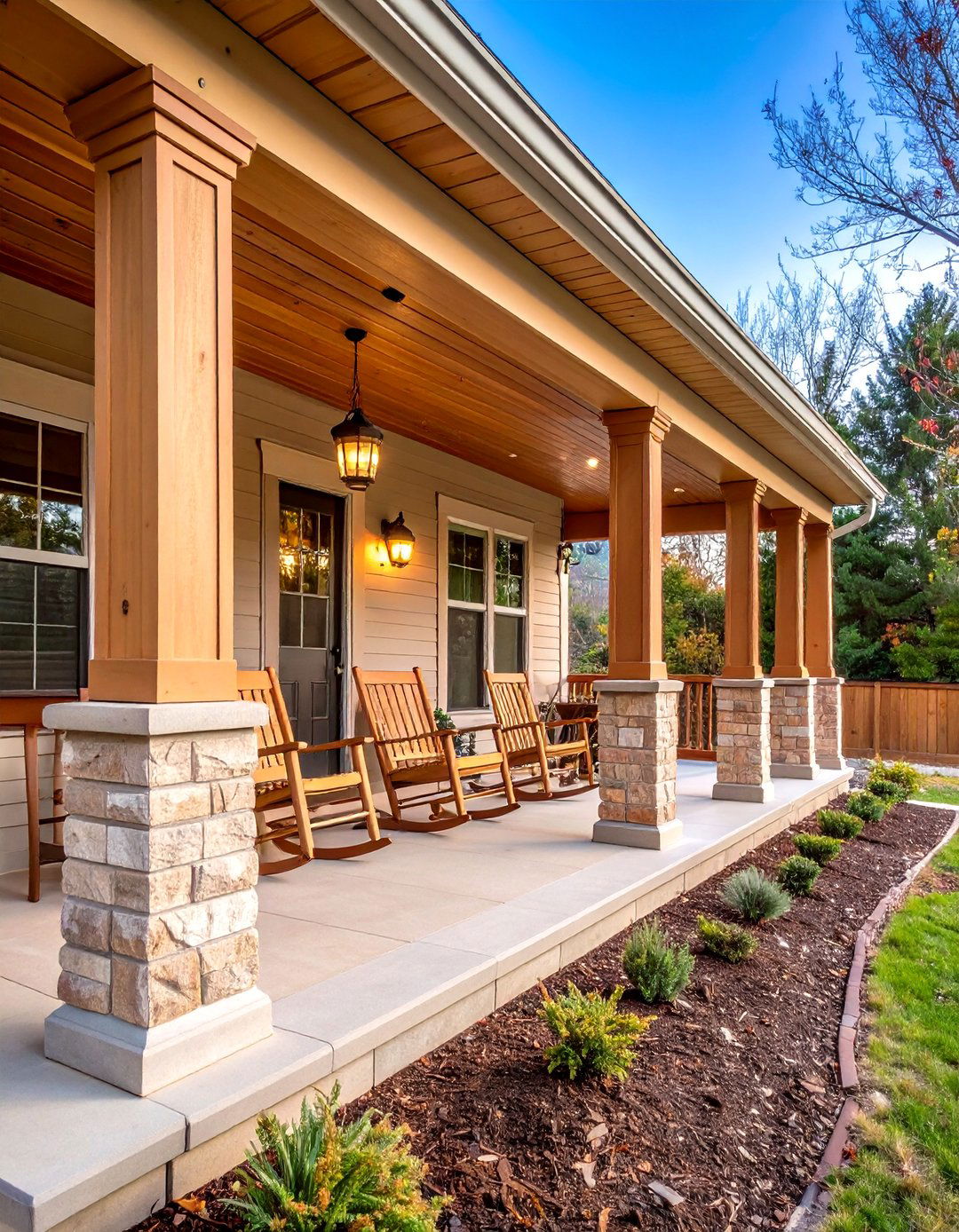
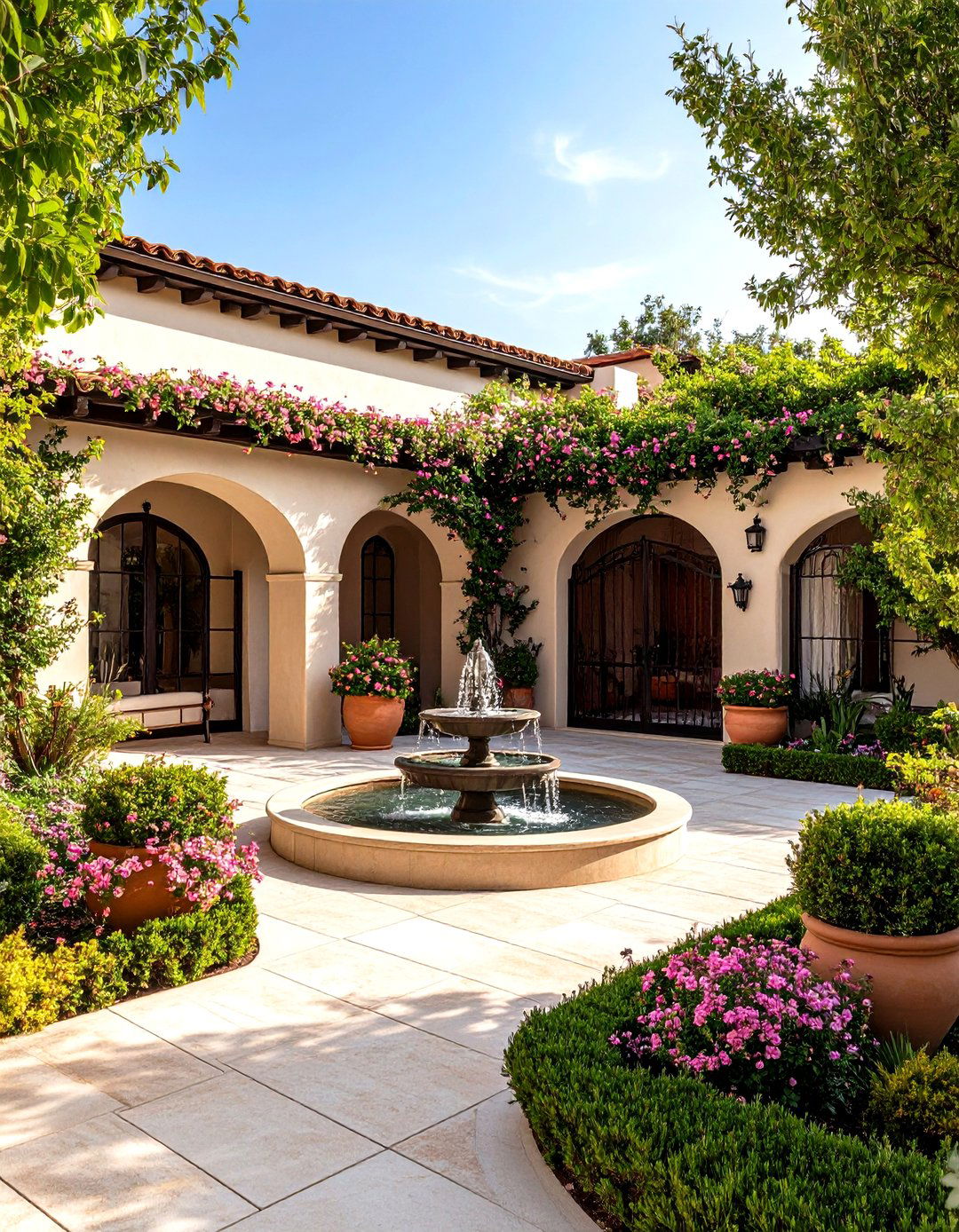

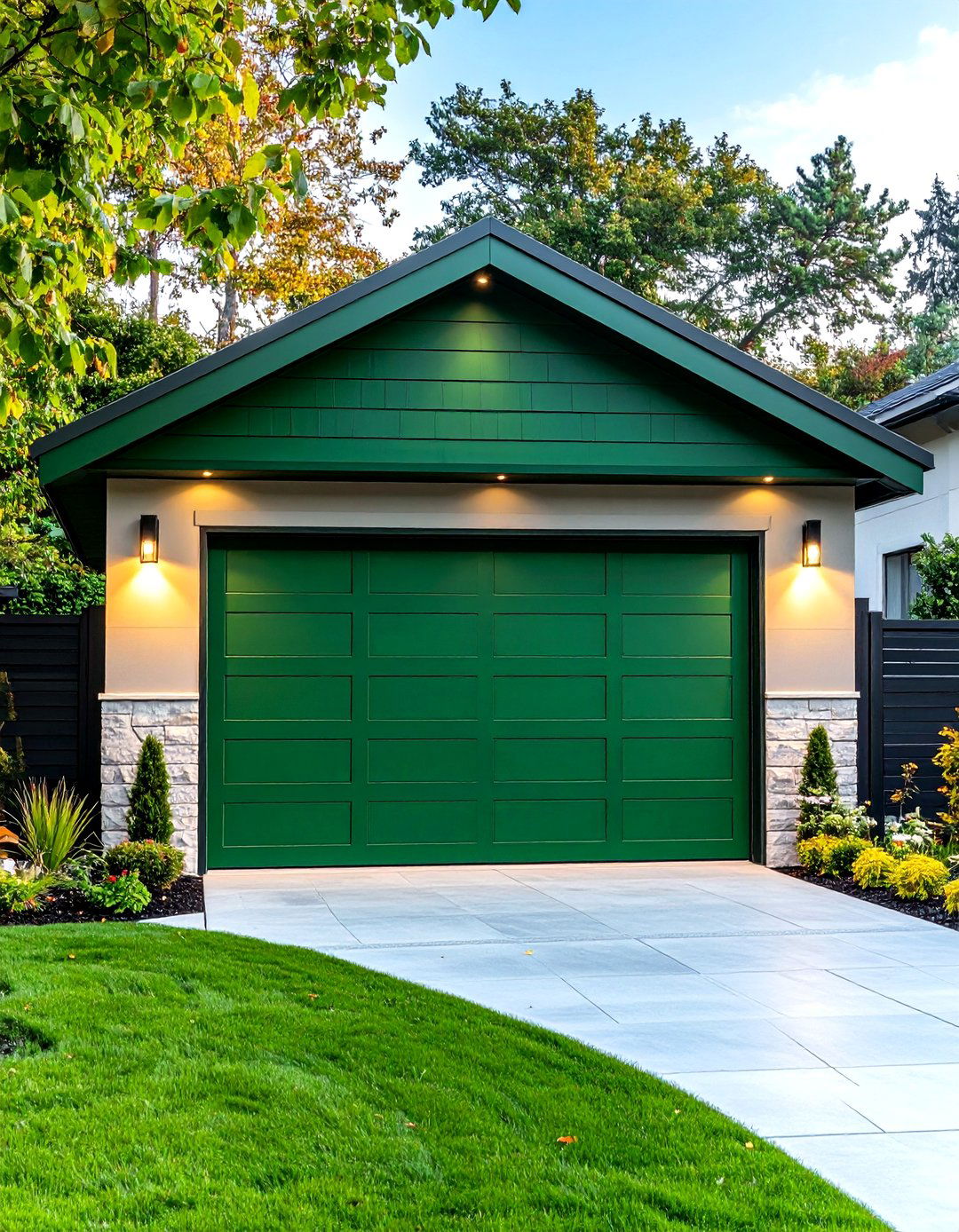
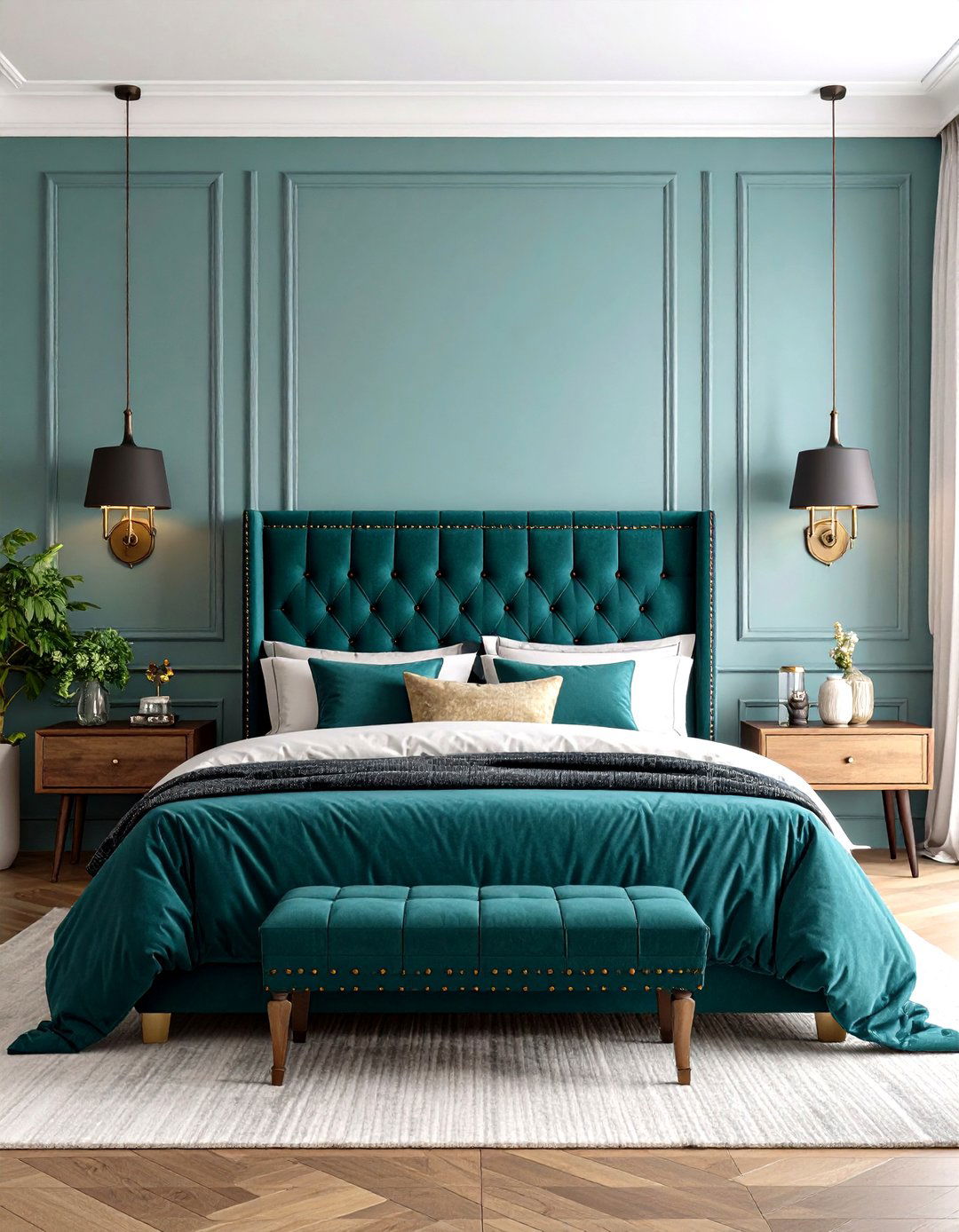
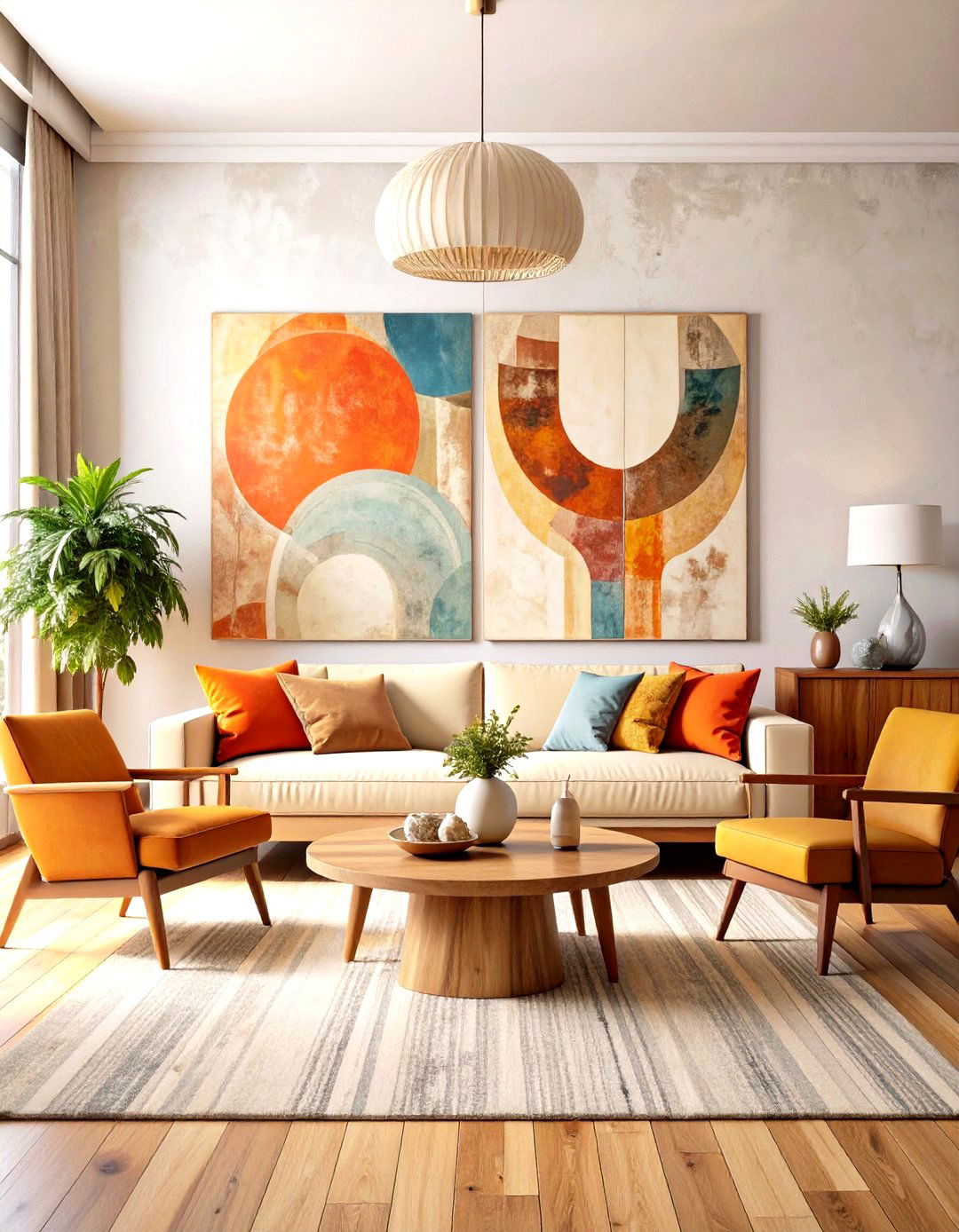
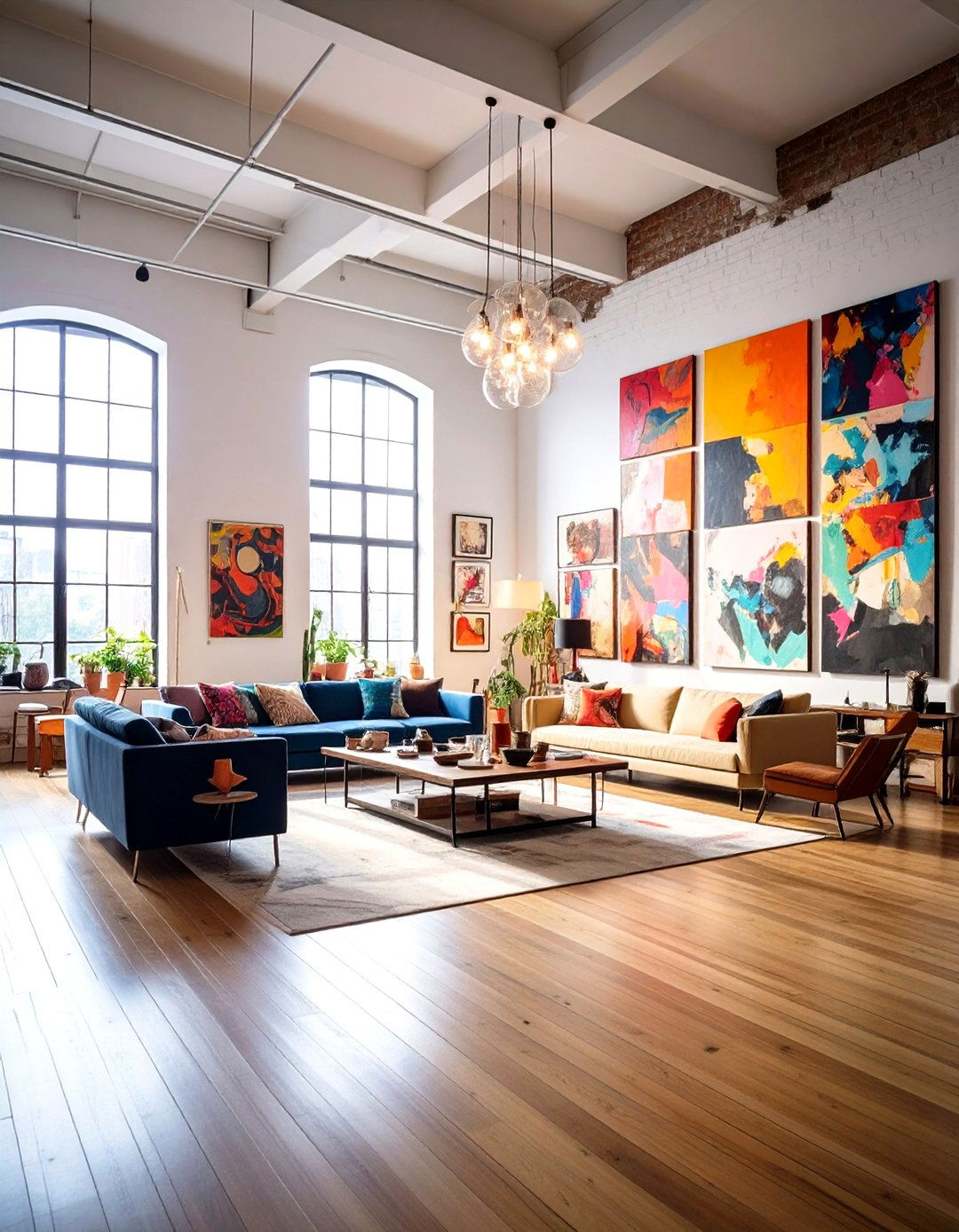
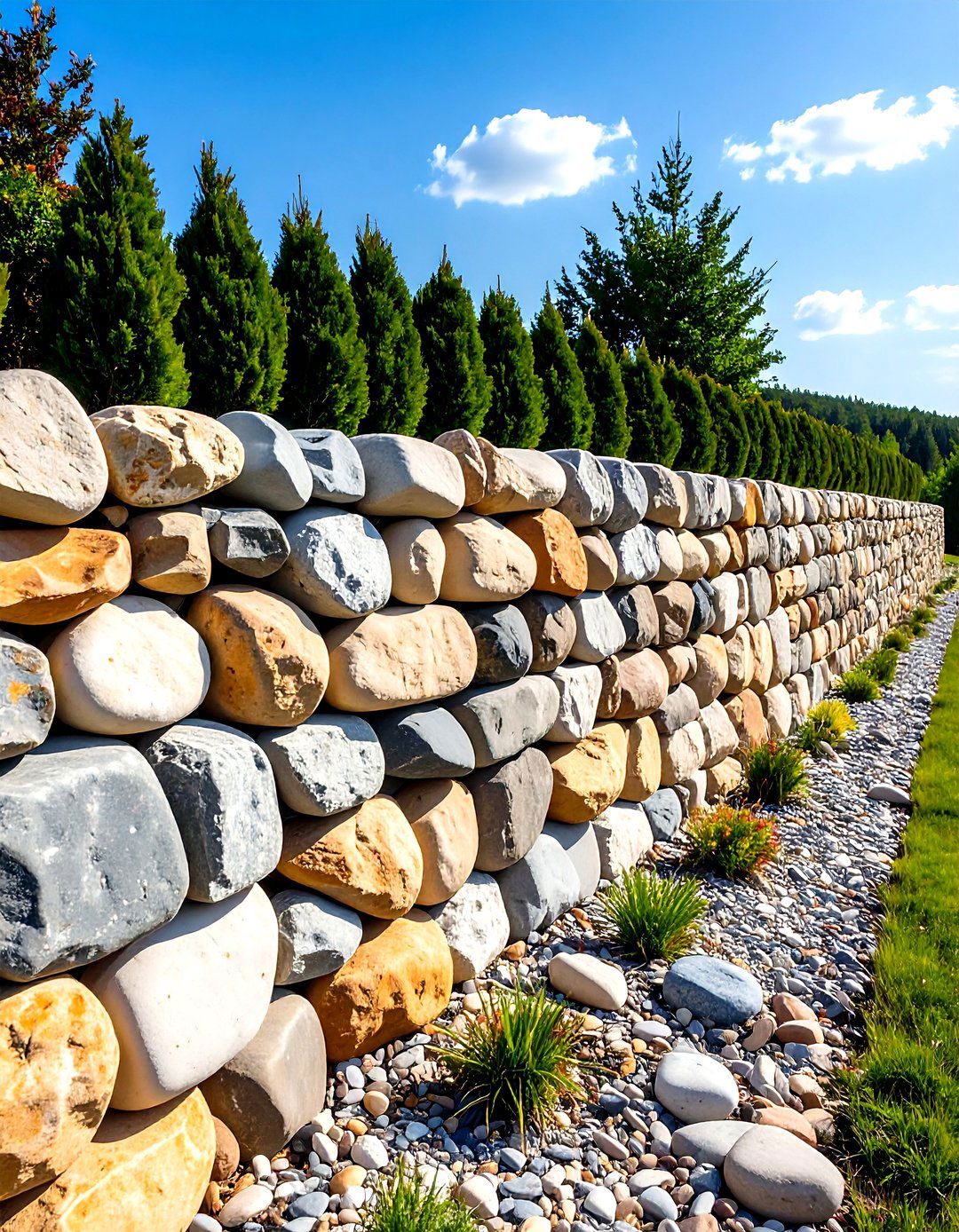
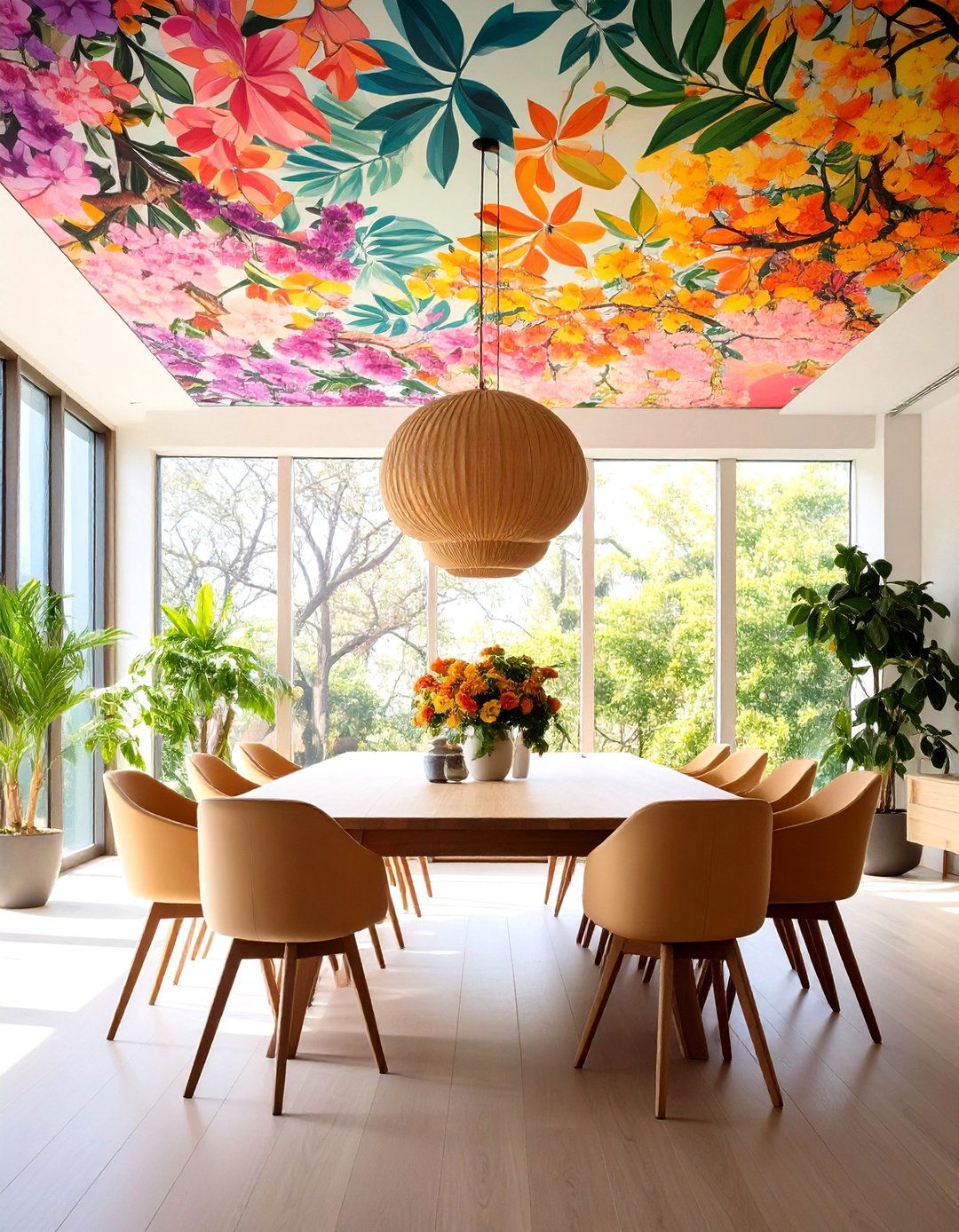
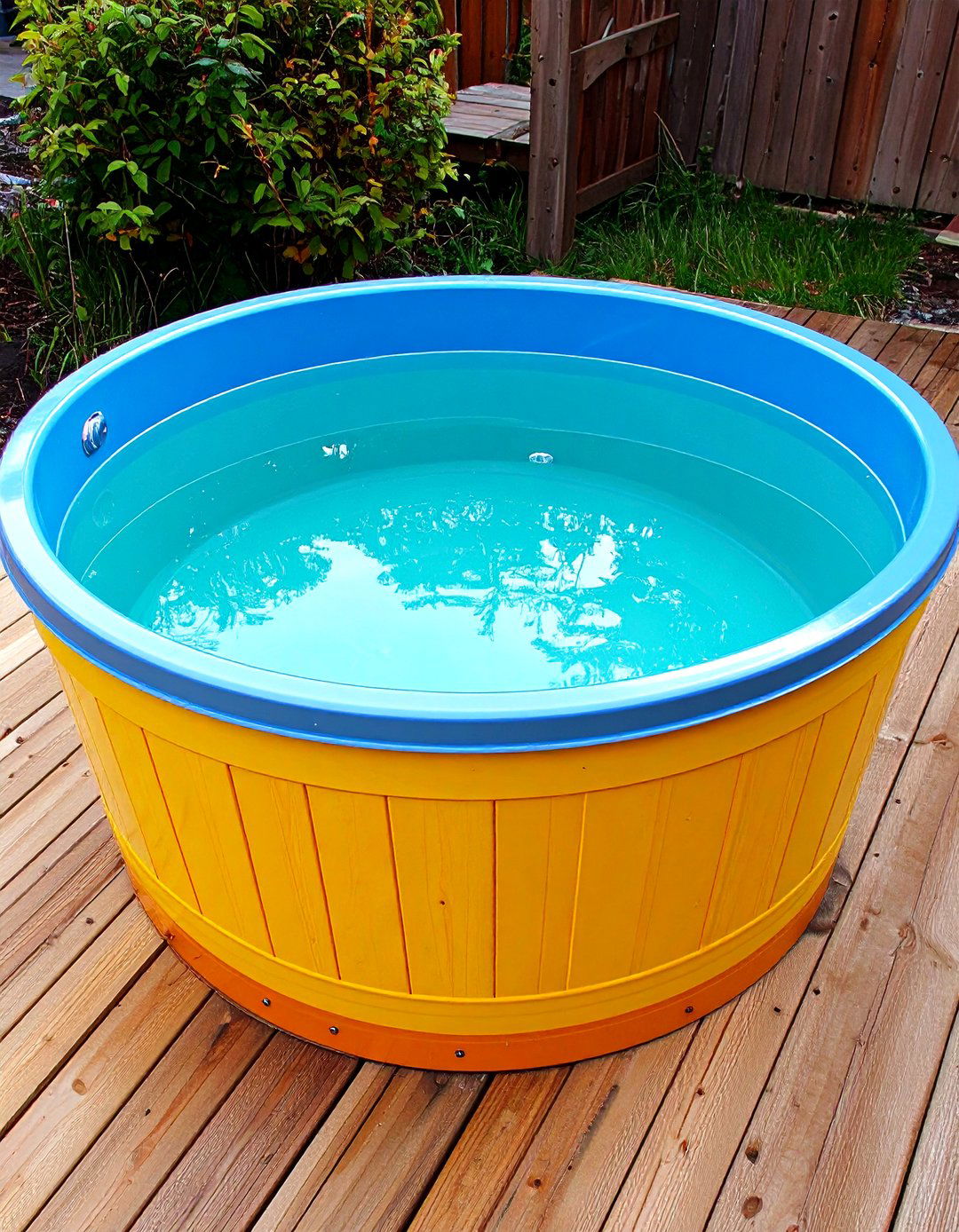
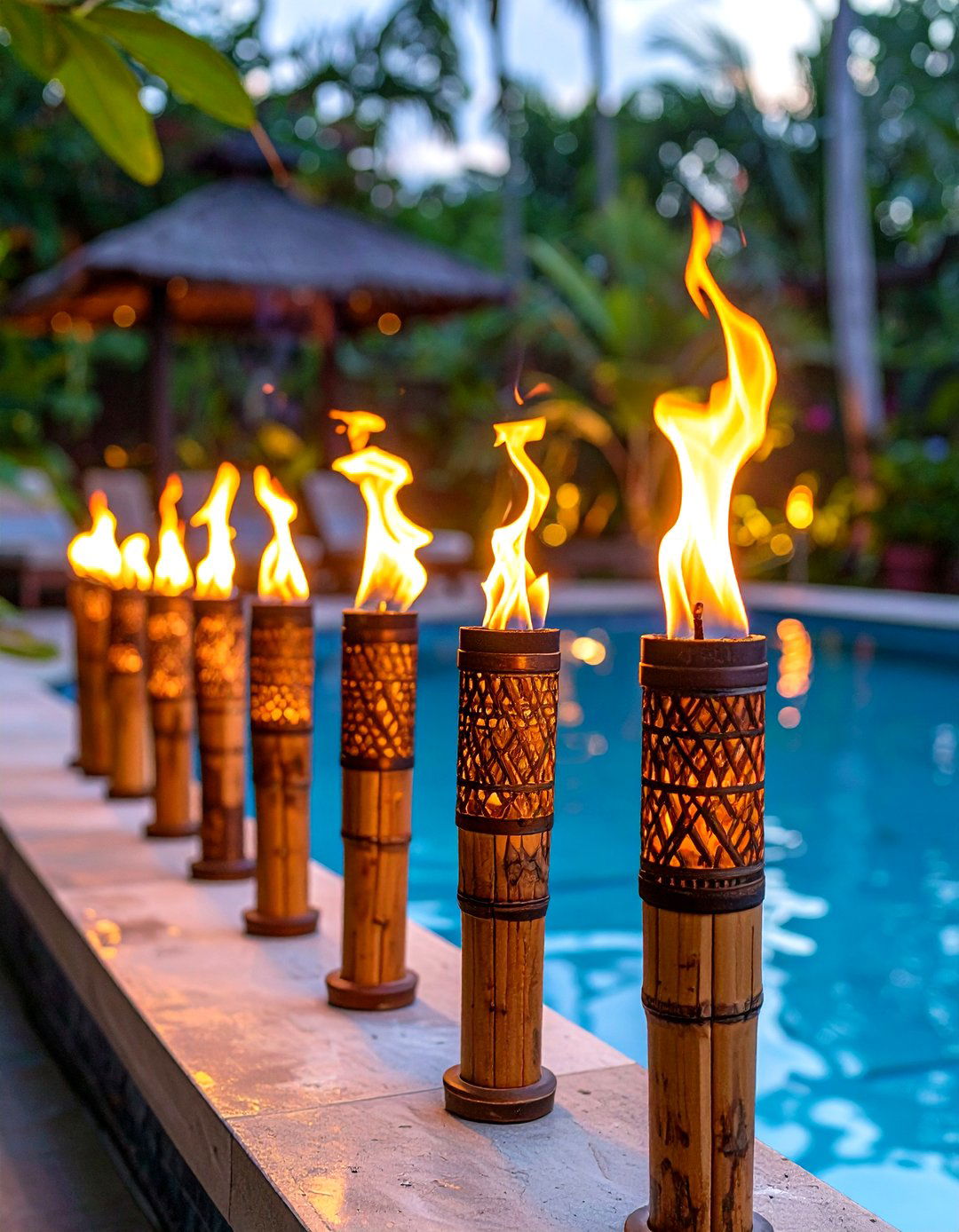
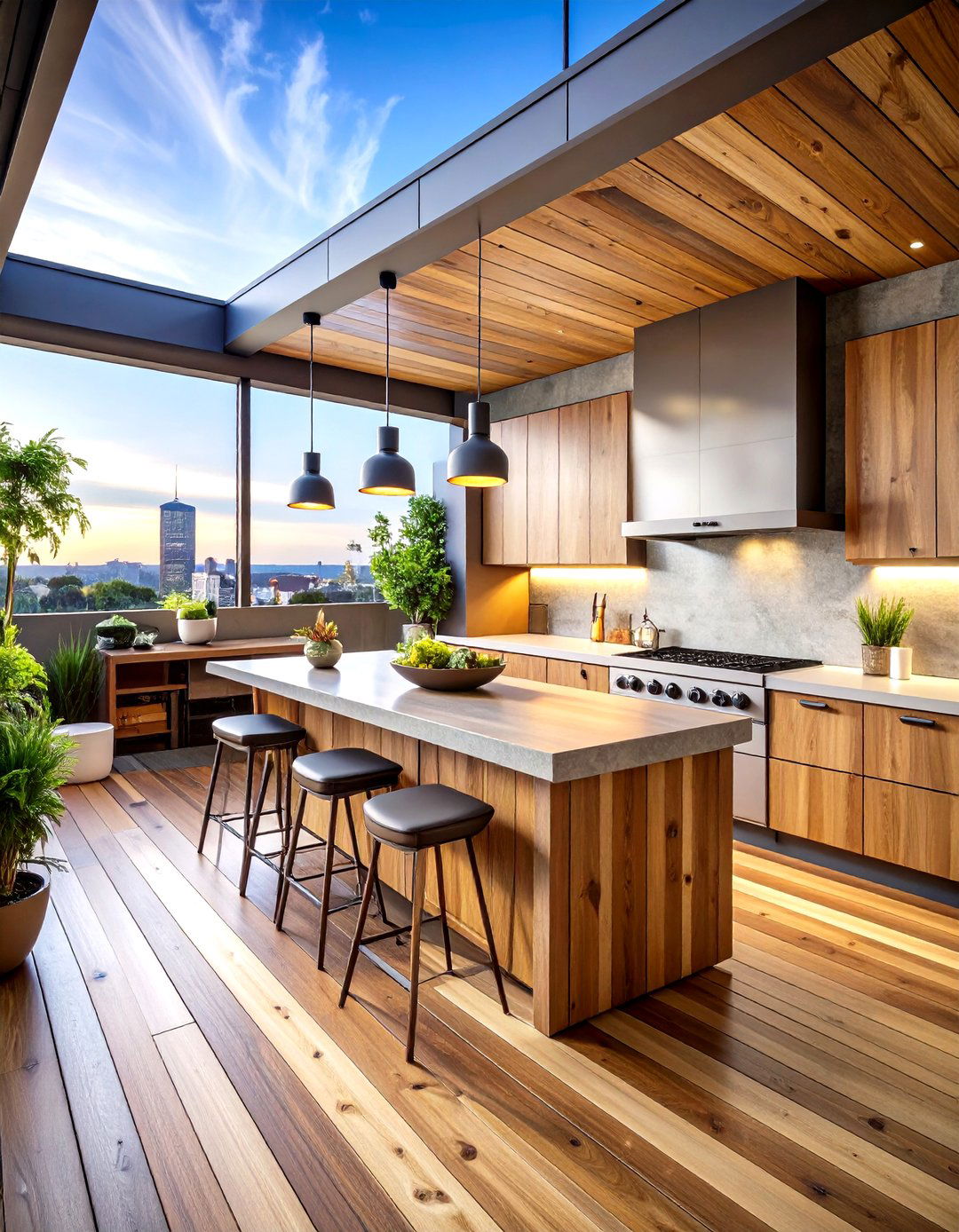
Leave a Reply